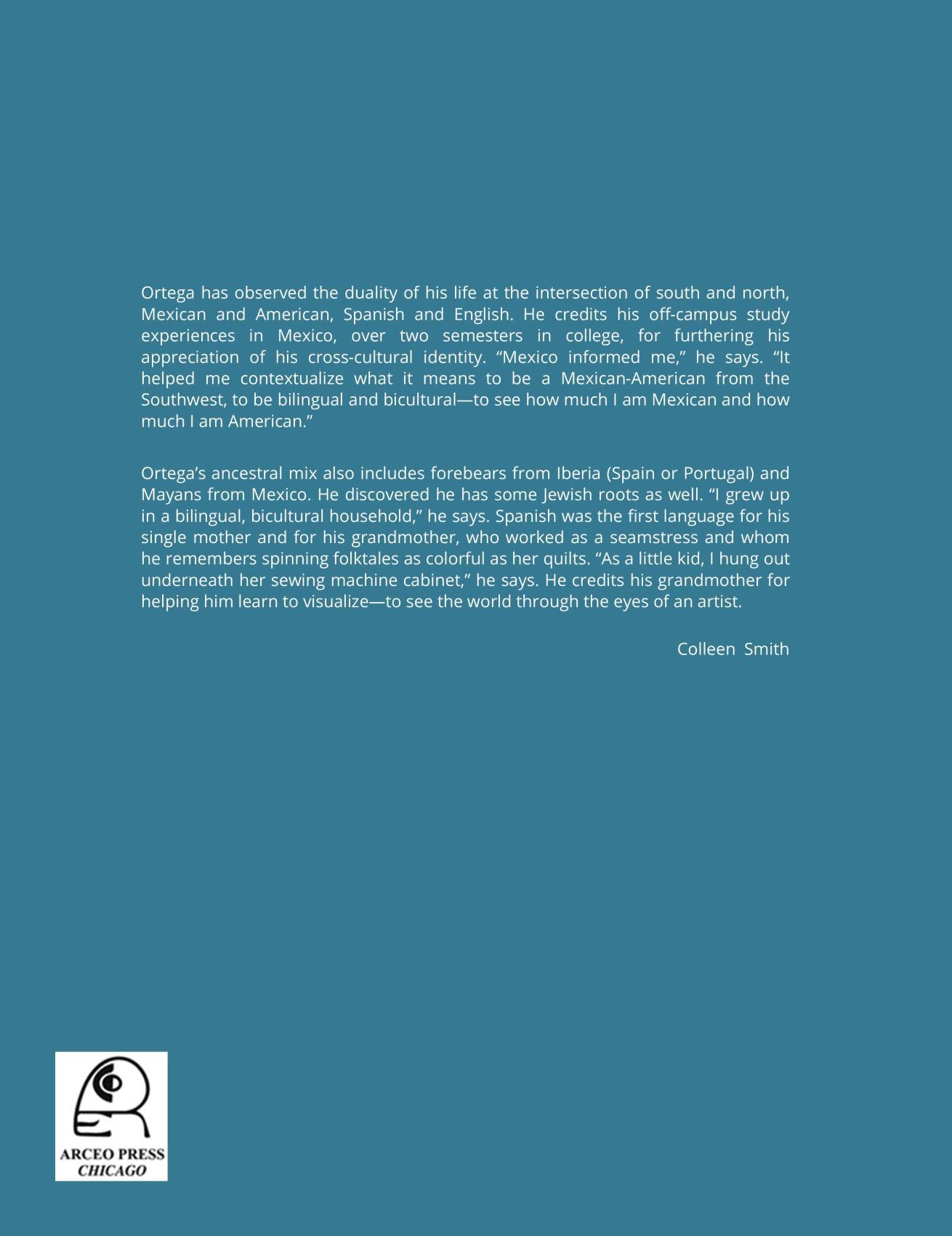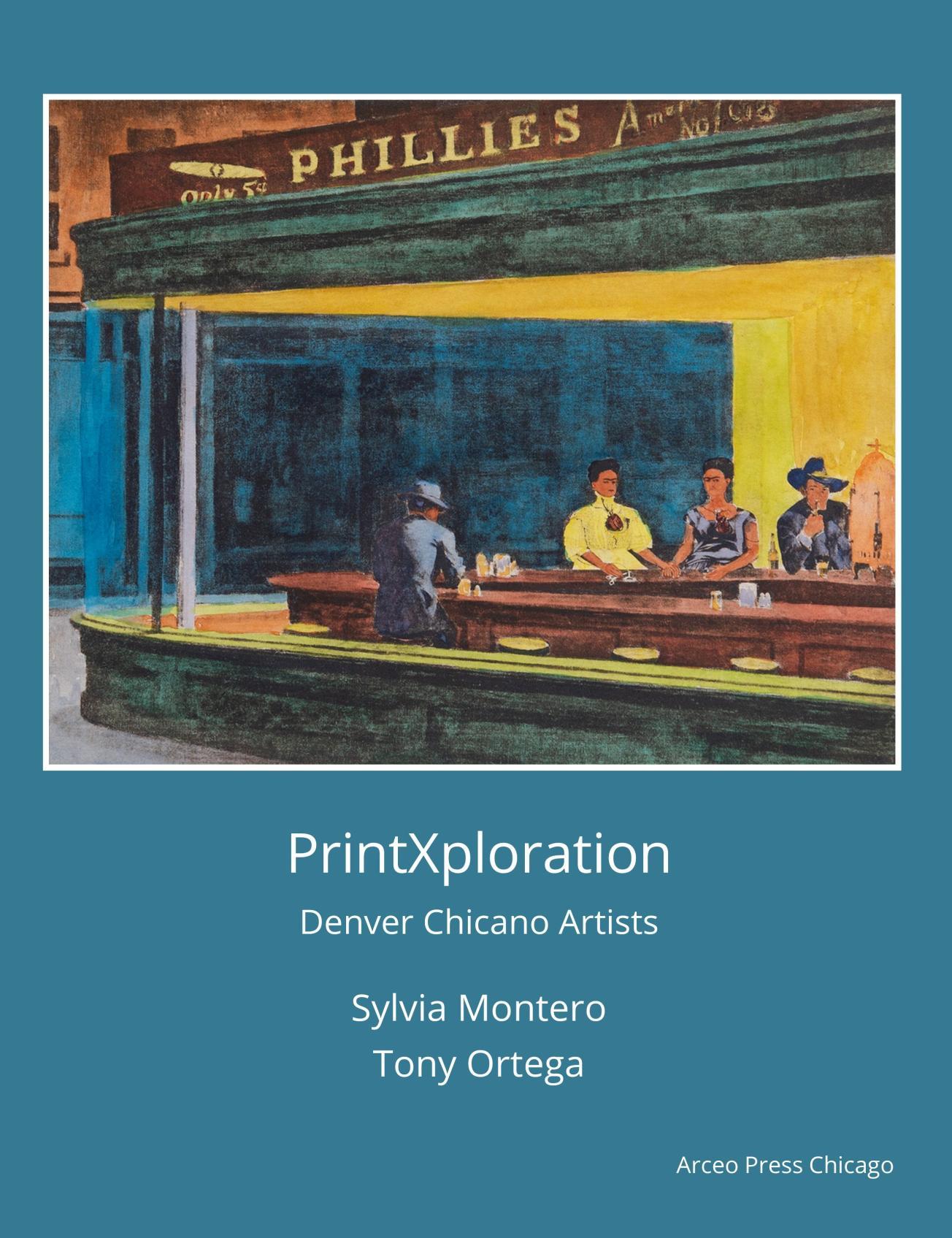

PrintXploration
Denver Chicano Artists
Sylvia Montero
Tony Ortega
Acknowledgements
PrintXploration: Denver Chicano Artists
An exhibition at Prospectus Art Gallery Chicago, August 2 – October 4, 2025
Exhibition and catalog supported in part by Debra Yates
Israel Hernández / Prospectus Art Gallery
Tony Ortega
Sylvia Montero Artists Magazine (artistnetwork.com)
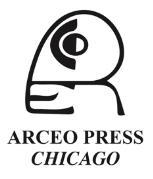
Copyright 2025 by Arceo Press. The essay author Colleen Smith and artists Tony Ortega and Sylvia Montero, here retains sole copyright to their contributing images to this book. No part of this book may be reproduced in any form or by any electronic or mechanical means without prior permission in writing from Arceo Press.
ISBN: 9798289496331
Arceo Press
7100 W. Dickens Ave., Chicago IL 60707, 773/610-0429 www.ArceoPress.com
Front cover art by Tony Ortega, “Barrio Night Hawks”
Cover & Catalogue design by Karen M. Gutfreund, @karengutfreundart, karengutfreund.com
PrintXploration
Denver Chicano Artists
August 2 – October 4, 2025

Sylvia Montero
Tony Ortega
Introduction
I met Tony Ortega and Sylvia Montero in 2019 when I visited Adrianna Abarca, founder of the Denver’s Latino Cultural Arts Center (LCAC). At that time, I was on my way to attend the opening reception for a travelling exhibition call “La Frontera Nos Cruzo” at the University of Northern Colorado at Greeley. Adrianna invited me to stay in Denver for a couple days and explore what the city had to offer, which was an invitation I could not refuse as I had never been in Denver. She showed me LCAC’s current and future spaces, la Tienda, and of course the growing collection she had built up until that time. Adrianna put me in touch with Tony Ortega who picked me up, drove me around town, and took me to visit the amazing space of The Art Gym, a for-profit venue where printmakers rent press time to do lithography, screen printing, intaglio, relief, among others. Tony introduced me master lithographer and Art Gym Shop Manager, Gregory Santos, who teaches and curates exhibitions for members and printmakers across the country.
During that early visit in 2019, I learned Tony was an art professor at Regis University in town. At one point both Tony and Sylvia suggested for me to submit an exhibition proposal to the art department for an exhibition in their O’Sullivan Art Gallery. I eventually applied and got accepted to exhibit in 2025. While in Denver for my exhibition, Tony and Sylvia took time to show me around the West Side of the city and experience the breath of the Mexican and Chicano communities.
When I worked at the National Museum of Mexican Art (NMMA), I remember coming across a couple of Tony’s prints probably from 1990’s. I think those were prints he produced at East Los Angeles’ Self Help Graphics atelier. The images of those prints got stuck in my mind during all these three decades. I learned more about him as we were both included in the publication “Contemporary Chicana & Chicano Art” books, published by Bilingual Press at Arizona State University in 2002. Tony and his two-page (176-177) spread volume II and mine (50-51) in volume I. In this way I learned that he was born in New Mexico but had lived most of his life in Denver and had studied in Veracruz and had visited Oaxaca and other regions of Mexico.
I was surprised that while Tony had been to Chicago, Pilsen in particular, and even at the NMMA, he has not had any level of presence with his art in Chicago. Neither solo exhibitions nor group shows. Tony mentioned he was interested in sharing his work with Chicago audiences. Since that time, I had the idea of looking for a possible exhibition site in Chicago that may be interested in doing an exhibition with his prints. Israel Hernandez from Prospectus Art Gallery became that person to make this exhibition possible. Now Chicagoans can enjoy his prints in this first twoperson exhibition in the Midwest.
René H. Arceo
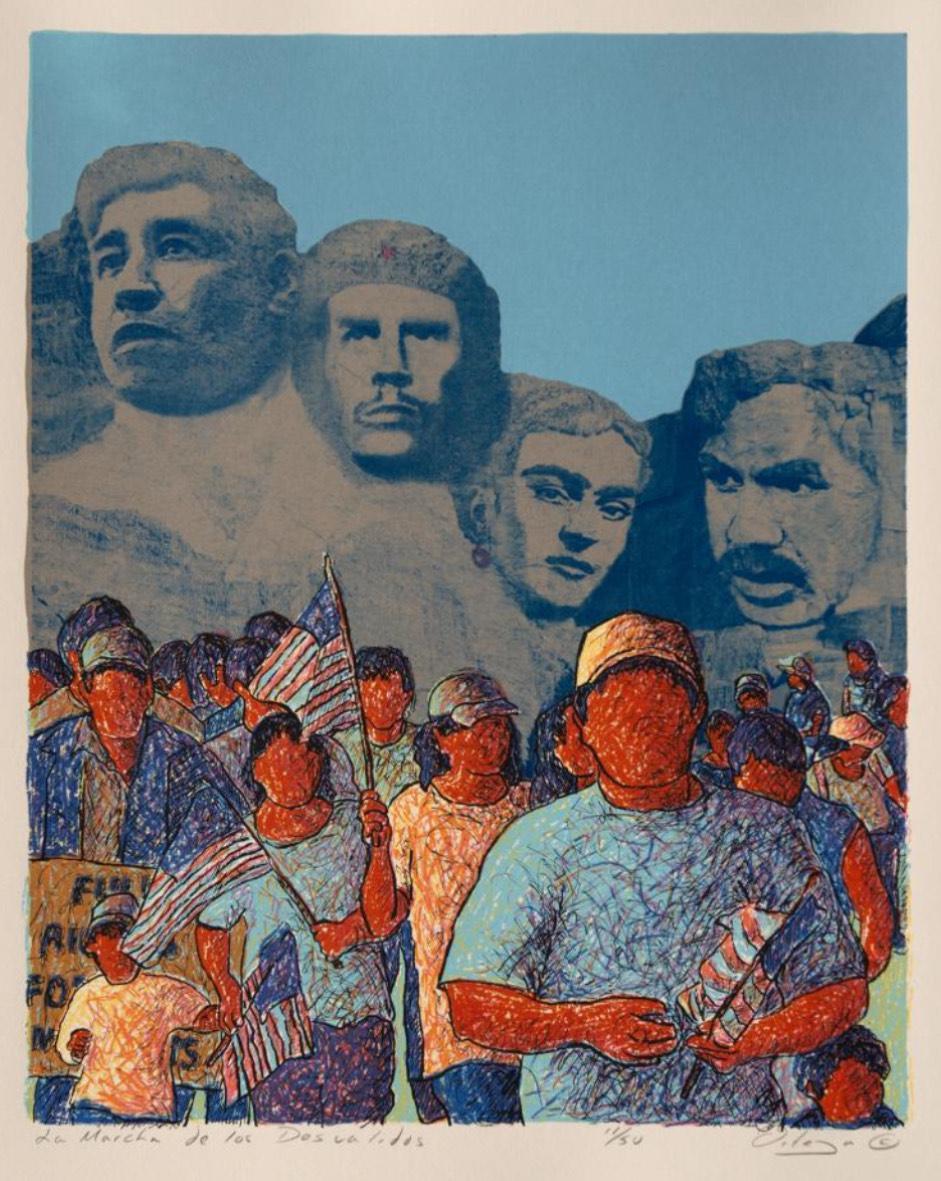
Chicago Exhibition Joint Artist Statement: Tony Ortega & Sylvia Montero
As life partners and fellow visual artists, we Tony Ortega and Sylvia Montero have spent over three decades nurturing a shared journey of love, creativity, and cultural expression. Based in Denver, Colorado, our lives and artistic practices are deeply intertwined, evolving in harmony and restlessness, passion and purpose. Our studio divided between two floors of our home reflects the nature of our collaboration: distinct yet connected, individual yet interdependent.
Our printmaking is informed by our Chicano identity, culture, and traditions. Sylvia’s work interweaves her Indigenous and Mexican heritage, while mine (Tony) crisscrosses my New Mexican and Mexican roots. These cultural lineages not only shape our visual language but also ground our work in a shared yet diverse narrative of heritage and identity.
Rooted in the Chicano/Chicana movement of the 1970s and 1980s, our work centers on the lived experiences of Chicanos and Latinos reflecting both personal and collective histories. In essence, our love and art have grown together. We challenge each other, exchange ideas and critique, and constantly evolve. Sometimes our creative paths converge; other times they diverge. Yet, in all cases, our work reflects a mutual respect and a shared commitment to preserving and celebrating the stories of our communities.
Through this exhibition, we hope to share the dynamic interplay of our individual voices and our creative partnership, and how both have flourished through shared purpose and cultural pride.
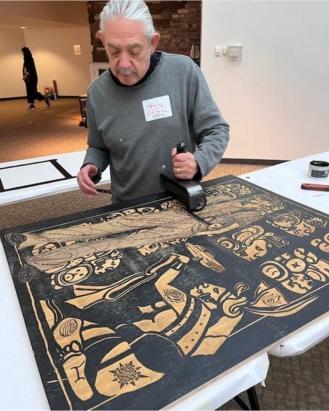
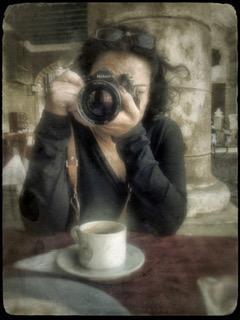
Marks of Distinction
A cross-cultural identity infuses the interdisciplinary artwork of Tony Ortega.
By Colleen Smith
Last fall, on October 14 a day observed as Columbus Day and Indigenous Peoples Day I met up with Denver-based artist Tony Ortega at his studio, where he sat, surrounded by various pieces of his art vibrant works created in different media that celebrate Chicano culture. For the artist, the bifurcated holiday feels significant and ironic. He and his wife, artist Sylvia Montera, had [recently ?] had their DNA tested through 23andMe. “We found out that I’m 30 percent Indigenous,” Ortega says, “and my wife is part Apache.”
Ortega’s ancestral mix also includes forebears from Iberia (Spain or Portugal) and Mayans from Mexico. He discovered he has some Jewish roots as well. “I grew up in a bilingual, bicultural household,” he says. Spanish was the first language for his single mother and for his grandmother, who worked as a seamstress and whom he remembers spinning folktales as colorful as her quilts. “As a little kid, I hung out underneath her sewing machine cabinet,” he says. He credits his grandmother for helping him learn to visualize to see the world through the eyes of an artist.
CROSS-CULTURAL CREATIVITY
This overlap of cultures is a common thread throughout Ortega’s art, which is full of imagery that manages to be both playful and political. The artist is softspoken and serious as he discusses his art, but his keen sense of humor comes through in his work. In saturated fiesta colors, Ortega has created pieces that superimpose the faces and figures of Latinos into recognizable scenes from art history, depicting a cross-sectional aesthetic a “culture within a culture.” In Frida’s World (above) for example, he riffs on Andrew
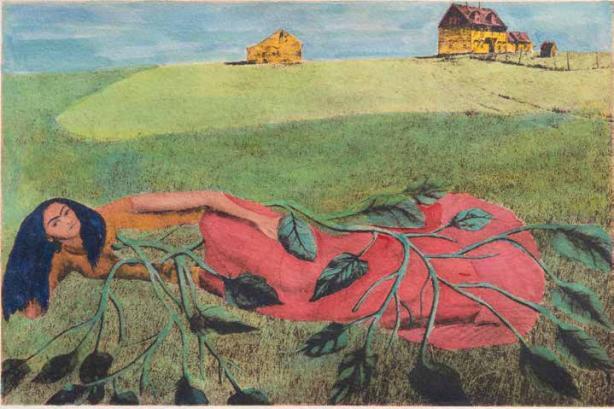
(below) a reinterpretation of Grant Wood’s American Gothic, Ortega replaces the white, Midwestern couple with Frida Kahlo and Diego Rivera.
He carries his imagination to the emblems and figures of American popular culture, too. In Lupe Liberty, for example, Our Lady of Guadalupe stands in for Lady Liberty. He has also painted Elvis, wearing a sombrero and poncho, strumming a guitar while backed up by a mariachi band, and Superman as a mustachioed “Superhombre,” with his red cape fluttering over a Mayan temple. “I call it hybridity,” Ortega says. “I’m bringing in elements from two cultures. I’m showing contexts of Mexican culture within the American environment. I like the juxtaposition.”
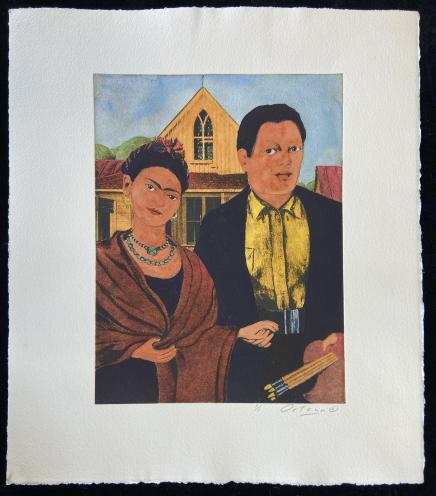
Wyeth’s iconic Christina’s World. For Mexican Gothic,
PICTURES
Ortega has observed the duality of his life at the intersection of south and north, Mexican and American, Spanish and English. He credits his off-campus study experiences in Mexico, over two semesters in college, for furthering his appreciation of his cross-cultural identity. “Mexico informed me,” he says. “It helped me contextualize what it means to be a MexicanAmerican from the Southwest, to be bilingual and bicultural to see how much I am Mexican and how much I am American.”
One of the threads that runs consistently through Ortega’s oeuvre is his devotion to depicting everyday Chicano scenes that always include the human figure. With this focus on humanity, his work becomes a salutation not only to Chicanos, but to all civilization.
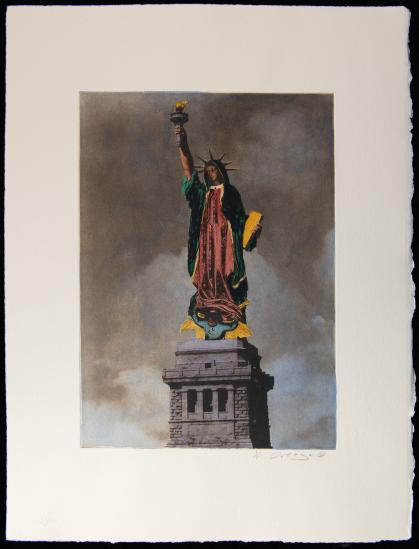
His imagery encompasses a range of emotion with pictures that can both comfort and disturb. The work can feel real but also dreamlike, both modern and ancient, familiar and unfamiliar, simultaneously cheerful and somber. It’s a body of work that recognizes the full spectrum of the human experience, and sees the beauty in it. One thing is certain: His art draws a viewer in for a closer look.
MAKING ONE’S MARK
Ortega is well known for his pastels vibrant and energetic works that feature a distinct mark-making that the artist calls “controlled scribbling.” As a surface for his pastels, the artist sometimes works on a black toned paper. Other times, he prepares his own surface, mixing a bit of black acrylic paint into Golden’s Pastel Ground, which contains volcanic pumice.
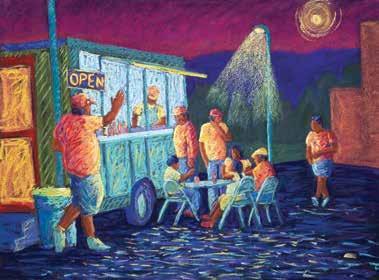
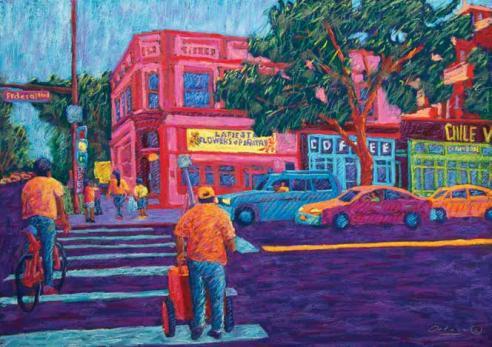
He dilutes the mixture slightly with water, and then brushes this onto a sheet of Arches white paper. “The brushstrokes with the ground create a texture on the paper,” Ortega says. “The black sits back so the color is more vibrant. I use drybrush or broken marks to reveal the underlying color. It adds complexity or more embellishment.”
Un Salud a Coyolzauhqui (Greetings to Coyolzauhqul [Aztec moon goddess])
La Fiesta, Flowers, Pinatas, Coffee y Chili Verde
Lupe Liberty
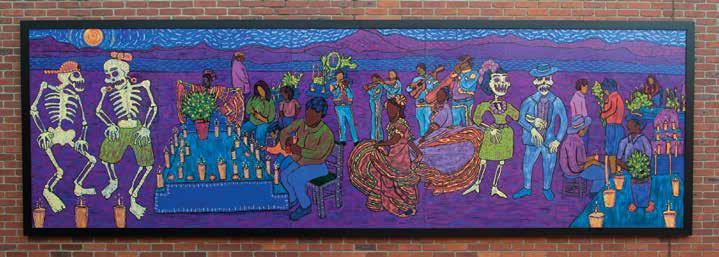
The artist works in a wide range of other media, as well. He paints in acrylic, creates hand-colored prints from woodcuts (Bonampak Cholo, right) as well as solar plate etchings, and lithographs from stone or aluminum plates. He has also worked large scale on public murals (example above) in spaces throughout his local community. “The variety of media I work in is just who I am,” Ortega says. “I like to experiment.”
The artist’s attention to distinct mark-making is something that figures into all of his work, across all media. His acrylic painting, Te Quiero Hablar (I Want to Talk to You), below, is a case in point. The piece includes layers of mark-making “like beats that move the eye around,” Ortega says. The marks in a sulfuric yellow
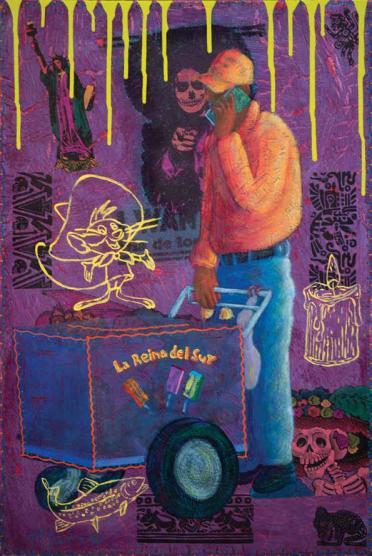
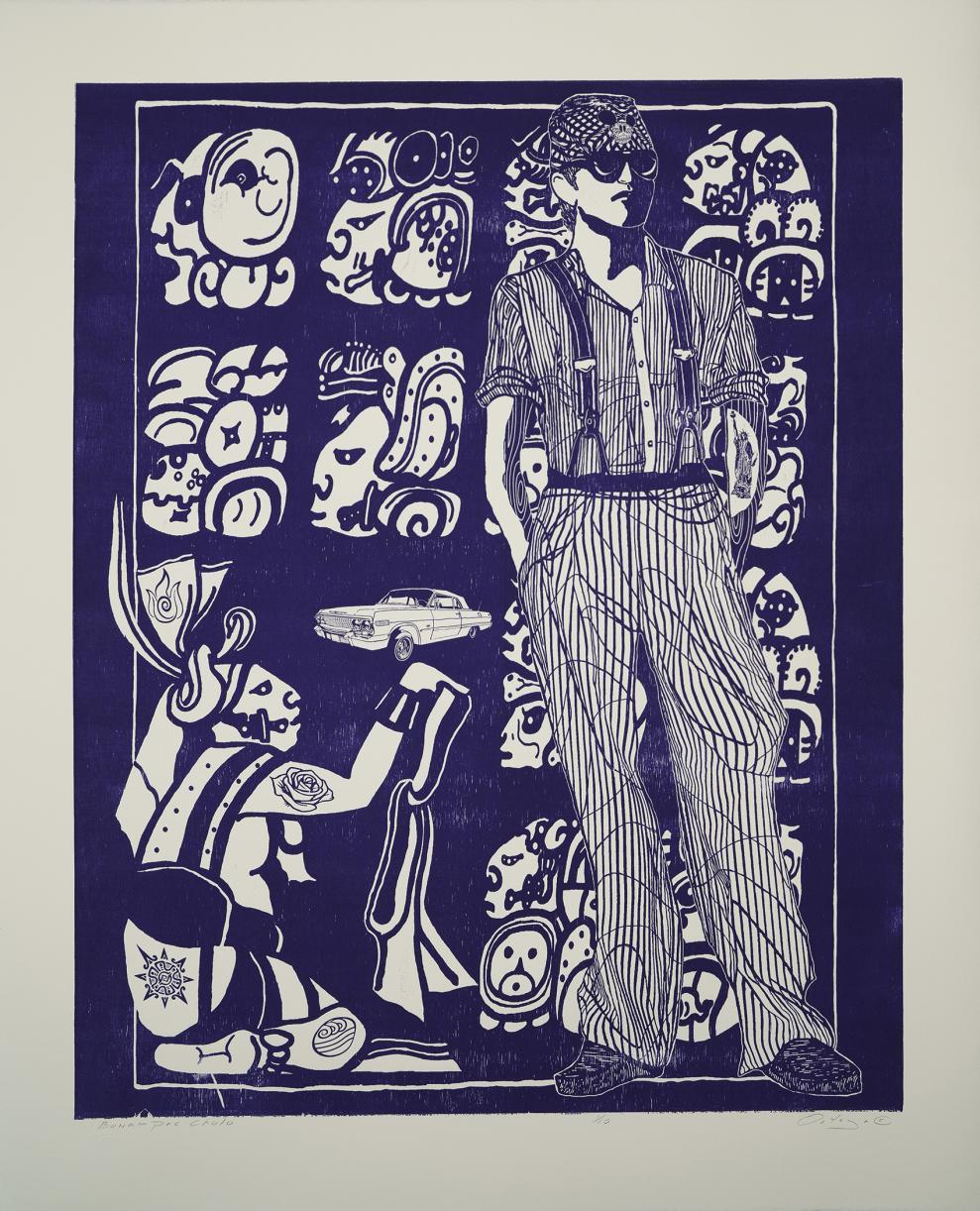
stand out most, adding an important pop of color to the graphic motifs, including a fish, candles and the Looney Tunes cartoon character, Speedy Gonzales. “The trout symbolizes what we ate as kids, but in Spanish, a trout means figuratively to be aware or to be smart,” the artist explains. “The candles are lit for the Day of the Dead or when somebody is passing.
Ortega takes advantage of his signature mark-making as a way to direct emphasis where he wants it. “I think of it like the theater. There’s what’s most important in the painting; in Te Quiero Hablar, it’s the main figure of the paletero with the cell phone. Then there’s the supporting cast, the ensemble and the set.” The composition is dynamic and a good example of the artist’s singular, recognizable style.
Ortega’s artistic experimentation has been met with professional success. At the time of our conversation, he was preparing for two solo shows: one at William Havu Gallery, in Denver, which opened in December; the other at The Base, a nonprofit gallery in Basalt, Colorado, with an opening date in February. Framed works cover the walls of his studio, a space that resembles an artistic treehouse. It has a second floor with windows that let in natural light and look out over rooftops, into treetops.
The studio includes framing equipment and lengths of unstained maple molding, and cabinets with drawers full of hand-colored prints and prints waiting to be colored. Atop a shelf stands his collection of alebrije traditional fantastical animals he teaches students to sculpt from empty strawberry baskets, toilet paper rolls and egg cartons. A windowsill is lined with his now-adult son’s collection of “Homies,” miniature figures that Ortega bought for him over the years from a neighborhood restaurant’s gumball machine. There’s a piñata in the form of a green extraterrestrial figure, which Ortega painted as a play on the politicized term “alien.”
Yet in the artist’s well-organized workspace, there’s one item that takes a prominent position; it’s an apron the artist’s grandmother made for him many years ago. Hanging on a hook, awaiting his next creation, the apron is covered in colorful smudges of ink and paint.
THE SPACE BETWEEN
In keeping with his identity as a man of two cultures, Ortega recently curated a group show at the Museum of Art, in Fort Collins, Colo. He titled the show “Nepantla: A Contemporary View.” Nepantla, a Nahaultl (or Aztec) word, refers to “the space in the middle.” In the catalog for the show, the term is described as a physical place to some. To others, it is a psychological or spiritual space, or a personal place. For Ortega, all of these ideas feel true. “Nepantla lives in the traditions, politics and complexities of community,” he notes in the catalog introduction. “This exhibition focuses on themes of identity, traditions, memory and struggle.” Clearly, these are themes that are central to his own work, and Ortega hopes his curation will open doors for other artists who live and work in “the space in the middle.”
THE BIGGER PICTURE
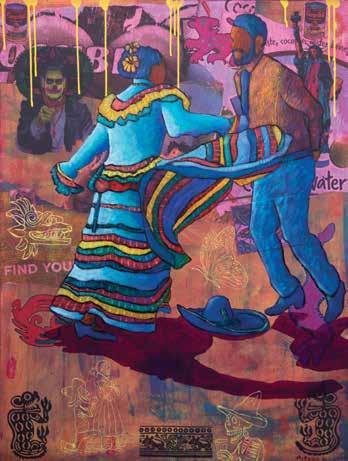
Tony Ortega has painted at least 70 murals in and around the Denver area the newest one at Cañon City High School, in southern Colorado. “Most of them are in schools, and most of them indoors,” he says. The artist says he basically stumbled into mural painting. “It’s a stereotype, but since I’m Mexican, people assumed I was a muralist,” he says. “In the early days, when I was figuring out how to make a living as an artist, murals were pragmatic.” Murals offer unique
El Jarabe Tapatio (The Mexican Hat Dance)
challenges not only because of the large-scale, but also due to the irregular surfaces. To mitigate these heavy textures, Ortega paints his murals on a sign-painting surface known as MDO (medium-density overlay) board, a type of plywood with a weather-resistant resin, rather than working directly on the surface of the wall.
Murals appeal to Ortega because he’s adamant that art is not merely for museums or the private collections of wealthy individuals, but for everyone. He appreciates the community aspect of painting a mural with a support staff that can include anywhere from 20 to 200 volunteers. That involvement also demands a certain amount of artistic detachment. “The hardest thing is learning to let go,” he says. “As an artist working individually in a studio or in a classroom, I’m focused on drawing or painting or printing, and nobody else has a hand in it.” For a mural, most of the creative effort comes from the artist, but there’s generally a group effort involved. “When somebody else make a mark, the mural can feel precious,” he says, “but I’ve learned to let go.”
MEET THE ARTIST
Shortly after he was born, in Santa Fe, NM, Tony Ortega’s mother moved to Denver with her infant son to live near family. In seventh grade, he met celebrated artist, Ramon Kelley, and began helping the artist with odds-and-end jobs around his studio. Although he never studied formally with Kelley, Ortega says “he modeled the artist’s life for me. He opened up the art world for me.”
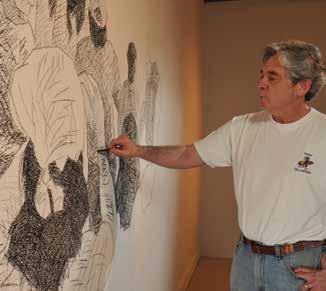
In college at University of Colorado Boulder, Ortega majored in Spanish and Latin American Studies, with a focus on international business. After graduation, however, he changed directions, attending the Rocky Mountain School of Art. At age 66, Ortega makes a living as a professional artist and as a full-time professor of art on the faculty of Regis University, in Denver. Ortega notes that one of the great things about teaching is that he also learns from his students. “I’ve learned Photoshop and lasercutting, how to use scanners and manipulate images all of which have enhanced my technical ability in making art.”
Learn more about the artist at TonyOrtega.net
*This article originally appeared in the March/April 2025 issue of Artists Magazine (artistsnetwork.com). Used with permission.
Tony Ortega
Biography
Tony Ortega is a Denver-based visual artist, educator and curator. His work has been exhibited in over 30 solo shows and featured in exhibitions at the Museum of Contemporary Art, Denver, CO, Boulder Museum of Contemporary Art, Colorado Spring Fine Art Center, Harwood Museum, Taos NM, Redline Art Center, Denver and the National Hispanic Cultural Center, Albuquerque, NM. Tony Ortega holds an MFA in drawing and painting from the University of Colorado Boulder and is currently a professor for Regis University. In 2018, he was the Regis College faculty lecture of the year. He was the recipient of the coveted Governor's Award for Excellence in the Arts (1999) and the Mayor's Award for Excellence in the Arts (1998). His work is in the collections of the Denver Art Museum, the Los Angeles County Museum, National Museum of Mexican Art, Chicago, IL, and the Museo Estudio Diego Rivera, Mexico City. He has exhibited in the United States, Latin America, and other parts of the world. His work is represented by the William Havu Gallery, in Denver, CO.
Artist statement
Over the past four decades, my work has focused on the images of the Mexican American experience. Through my work, I offer a multifaceted view that incorporates the history, traditions, and culture of Mexican Americans. In the postmodern age, my visual language speaks to the issues of identity, shifting demographics, and cultural hybridity that draws from pop culture and seeks to present truth at a more local, personal level.
I spiritually, emotionally, and physically live among the clash of two cultures-one Mexican and one American. This issue is my daily problem. I must cross a border-not the Mexican and U.S border created for the separation of two nation states, but the border between two cultures. Here in Denver, the northern frontier of Aztlan, the northern outpost of Latin American, lays my journey from south to north. I must deal with a dominant culture whose history is from east to west. On my journey, I must think from: Spanish to English, community to capitalism, and family to individuality and back again. My journey is not unique as many Chicanos also go through this clash of cultures.
As a printmaker, I compose with digital technology and traditional drawing techniques and merge the resulting designs into traditional printing making. I create prints in a variety of techniques that includes lithography, etching and silkscreen. In my creative process I use distortion and exaggeration for emotional effect. I apply vivid and dynamic color, overlapping transparent color with opaque color. I combine flat space with cubical space. My work interweaves, juxtaposes and superimposes unlikely images from American and Mexican popular cultures that include icons, symbols, history and the contemporary world to foster opportunities for the bending of meaning. My goal as an artist is to create artworks that are personal, and which also express a sense of social responsibility. www.tonyortega.net
TONY ORTEGA ARTWORKS
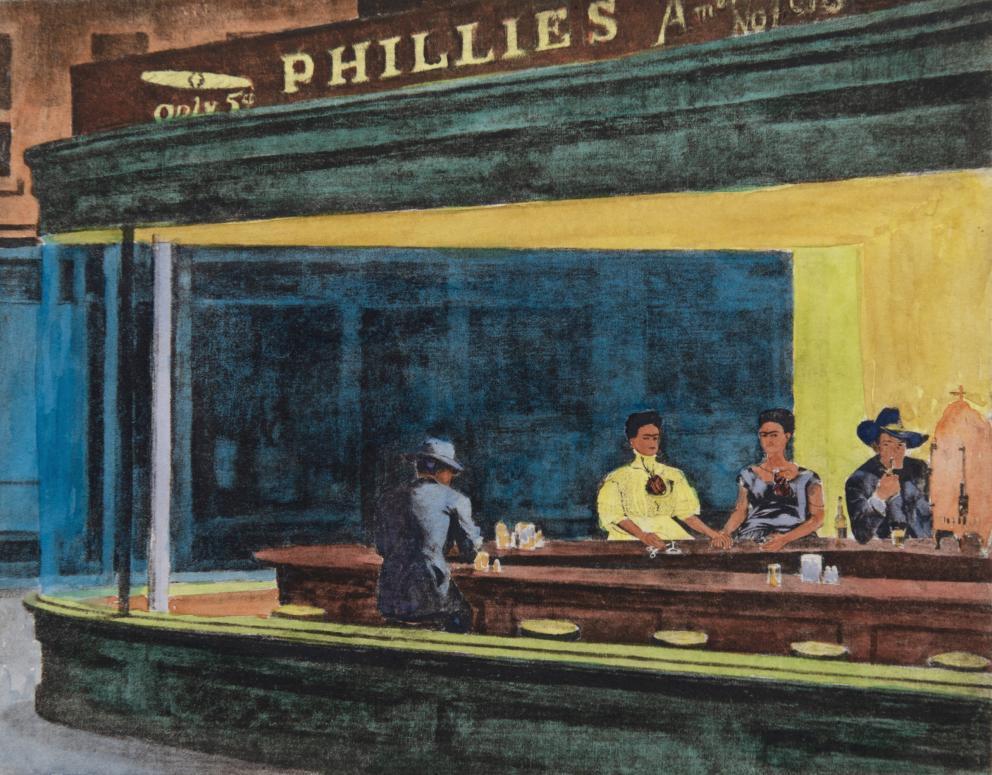
Barrio Nighthawks, 2025, Etching and watercolor, 7.75 x 9.74 inches
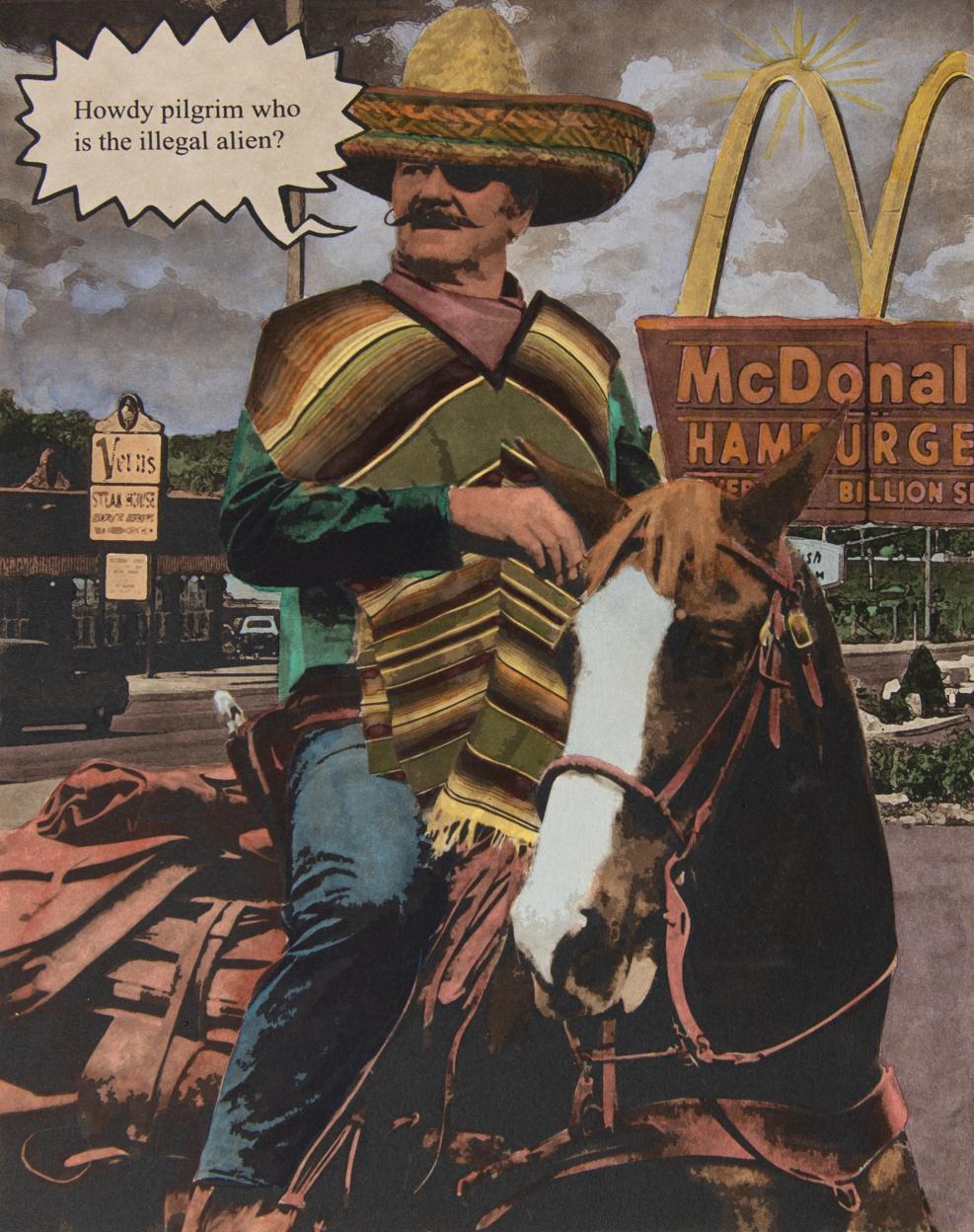
Juan Wayne, 2025, Etching and watercolor, 10 x 8 inches
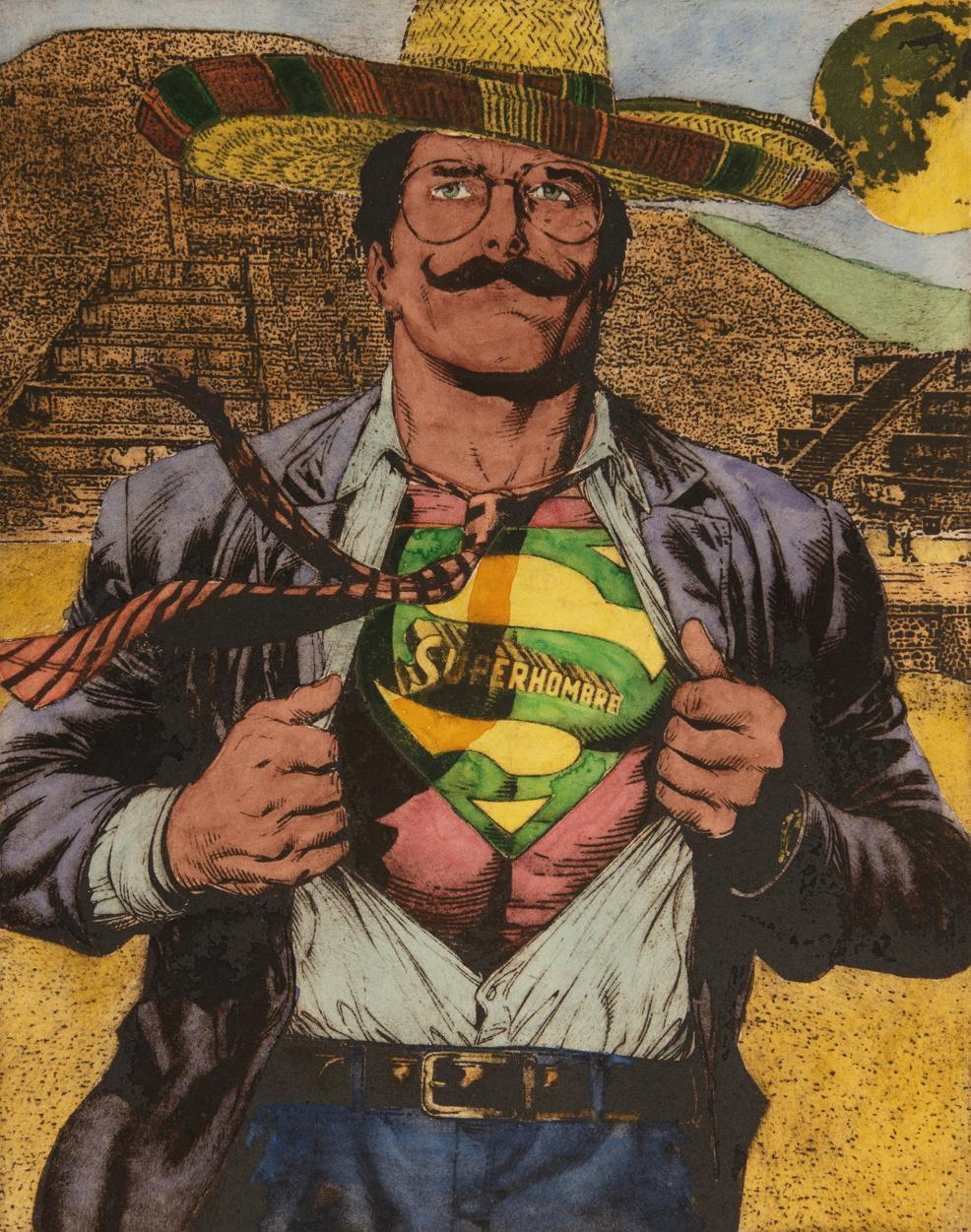
Super Hombre con Sombrero, 2025, Etching and watercolor, 10 x 7.75 inches
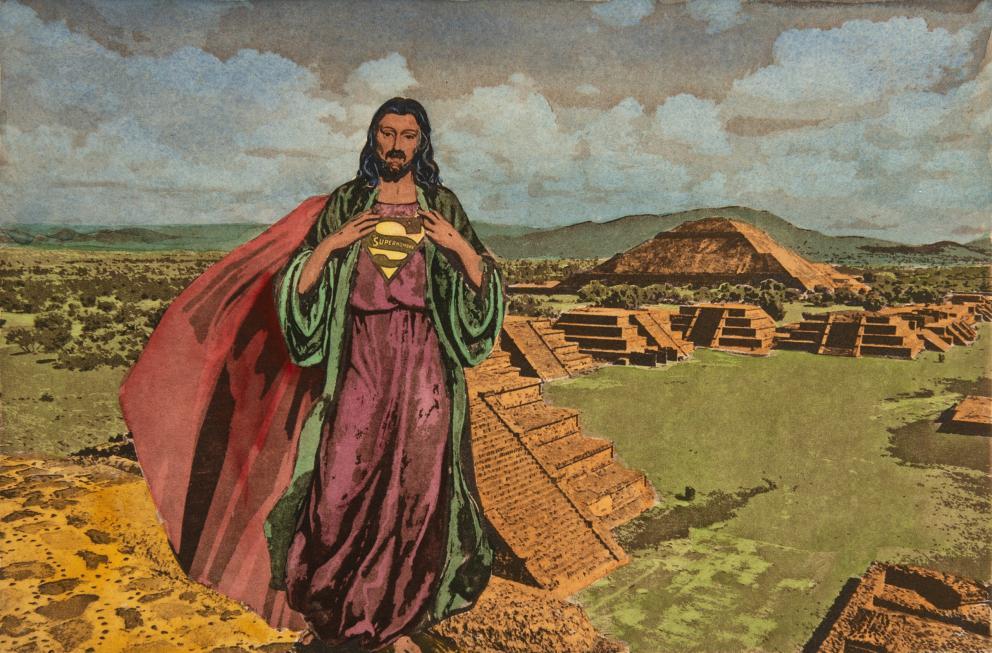
Super Hombre Jesús, 2025, Etching and watercolor, 6.5 x 9.75 inches
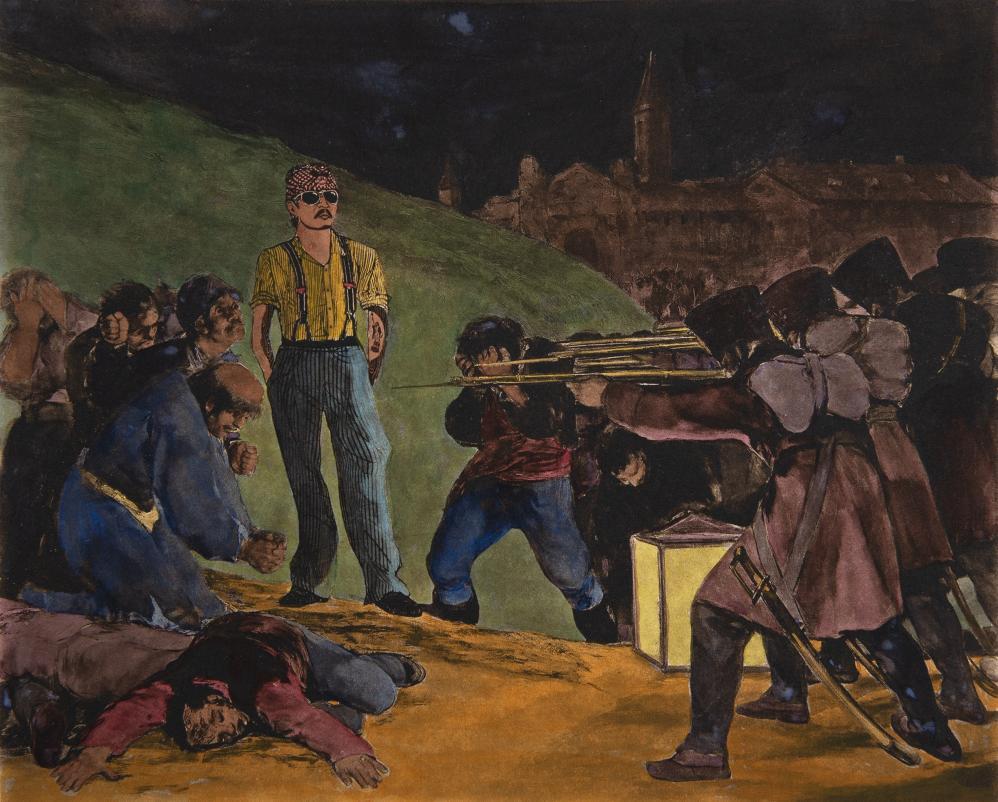
Mantenerse Erguido, 2025, Etching and watercolor, 8 x 10 inches
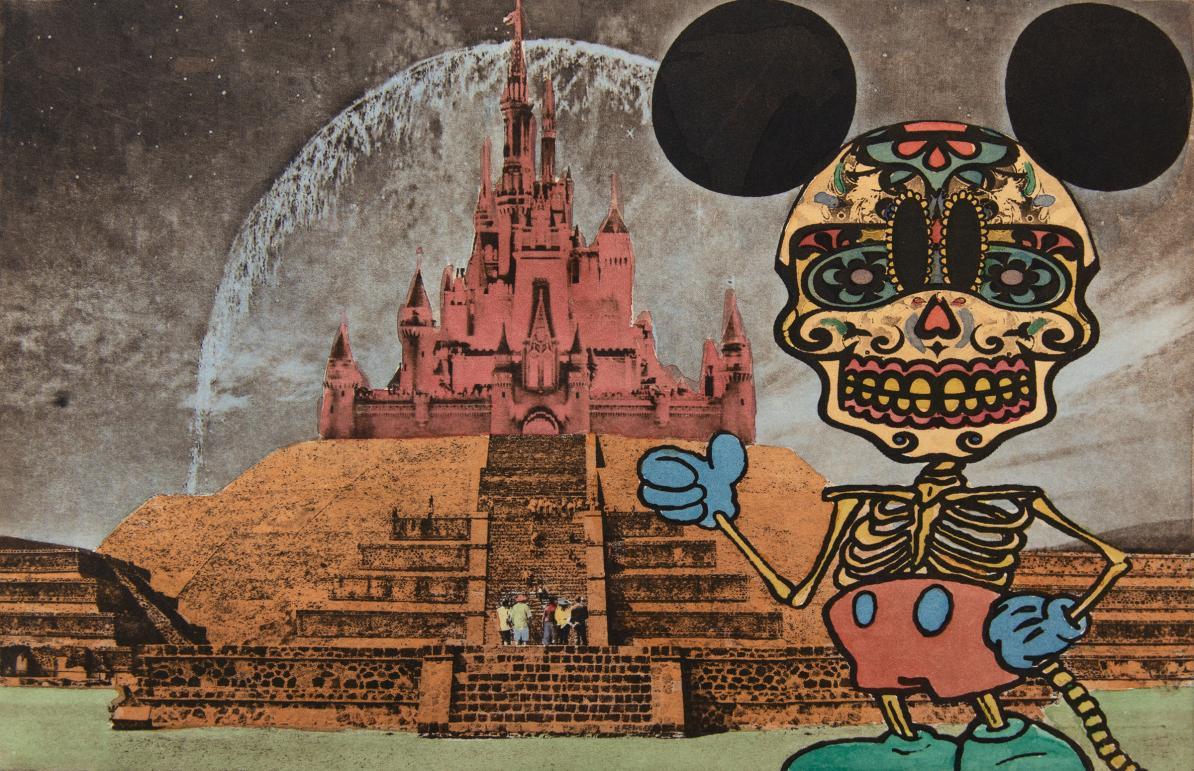
Mickey Muerto at Teotihuacán, 2025, Etching and watercolor, 7 x 10.5 inches
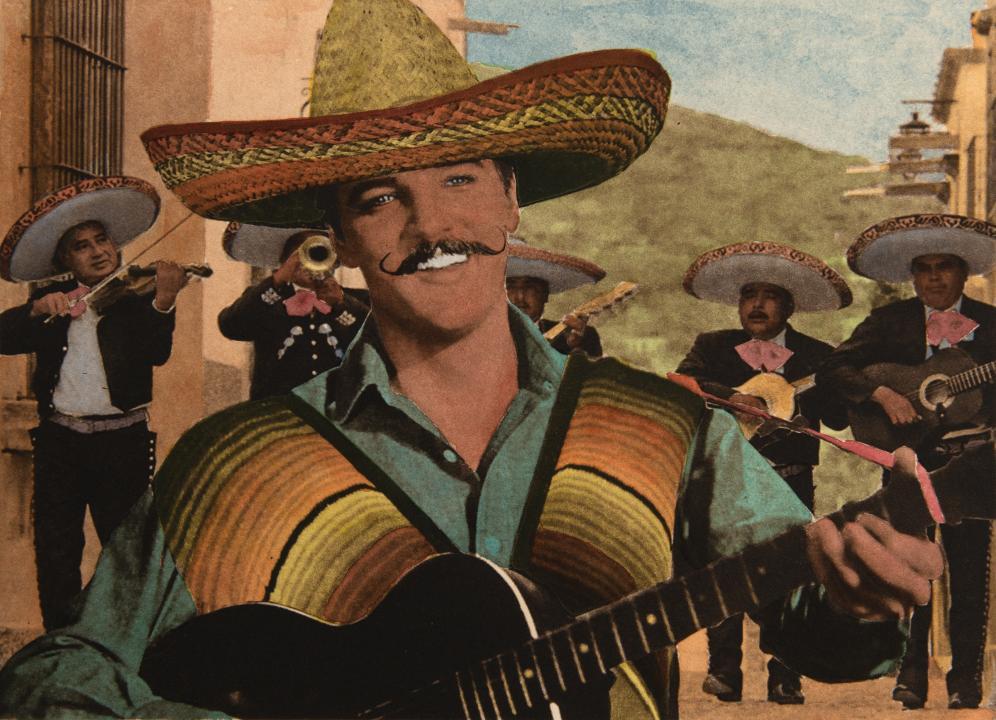
El Vez, 2025, Etching and watercolor, 7.5 x 10 inches
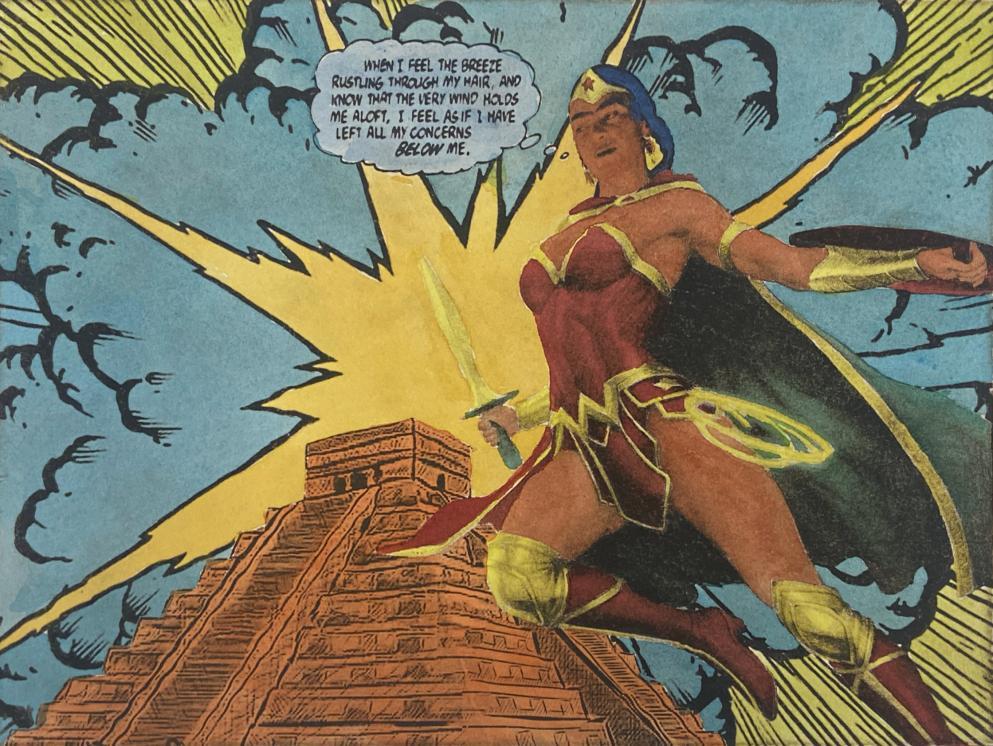
Wonder Woman Frida, 2025, Etching and watercolor, 7.5 x10 inches
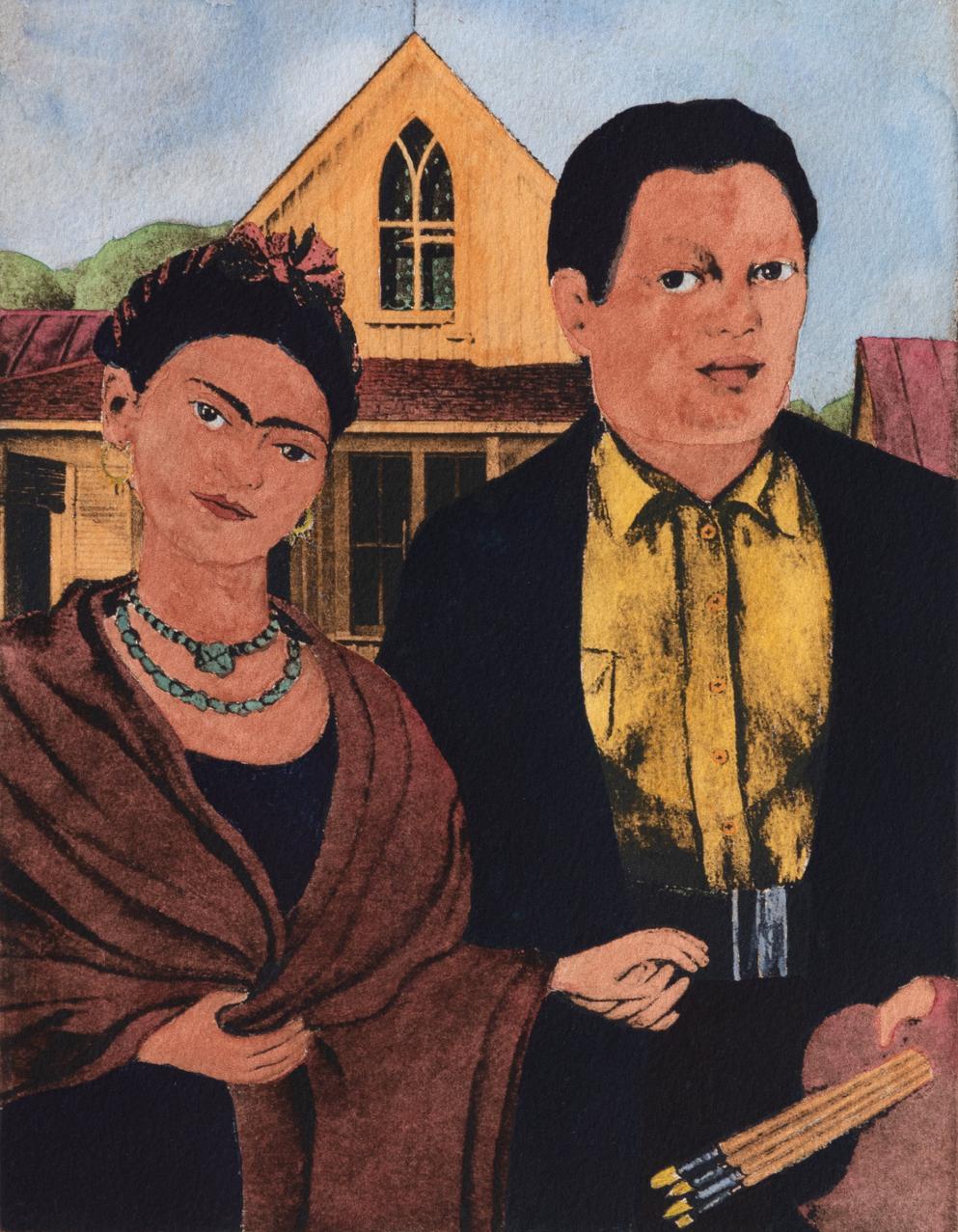
Mexican Gothic, 2025, Etching and watercolor, 10.5 x 8 inches
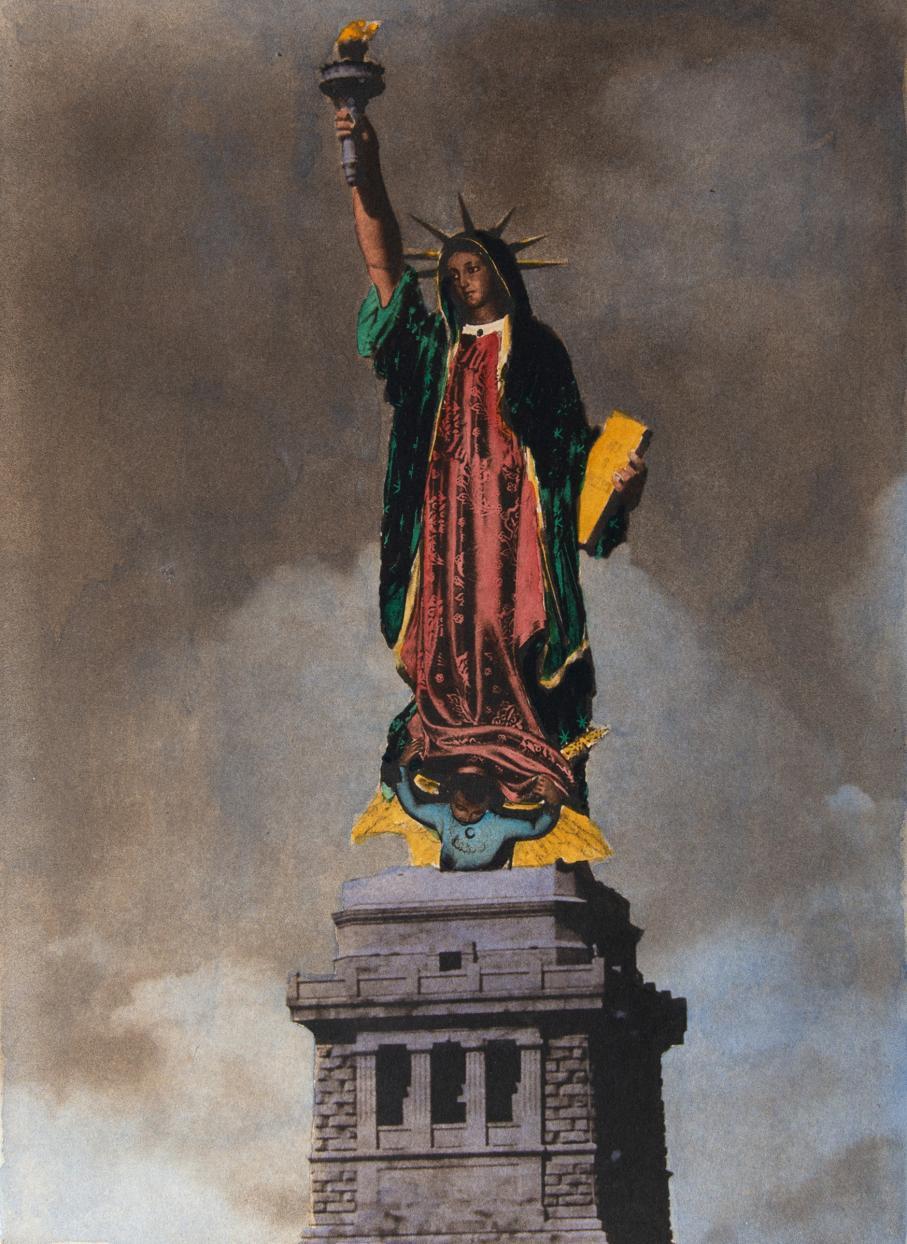
Lupe Liberty, 2025, Etching and watercolor, 10 x 7 inches
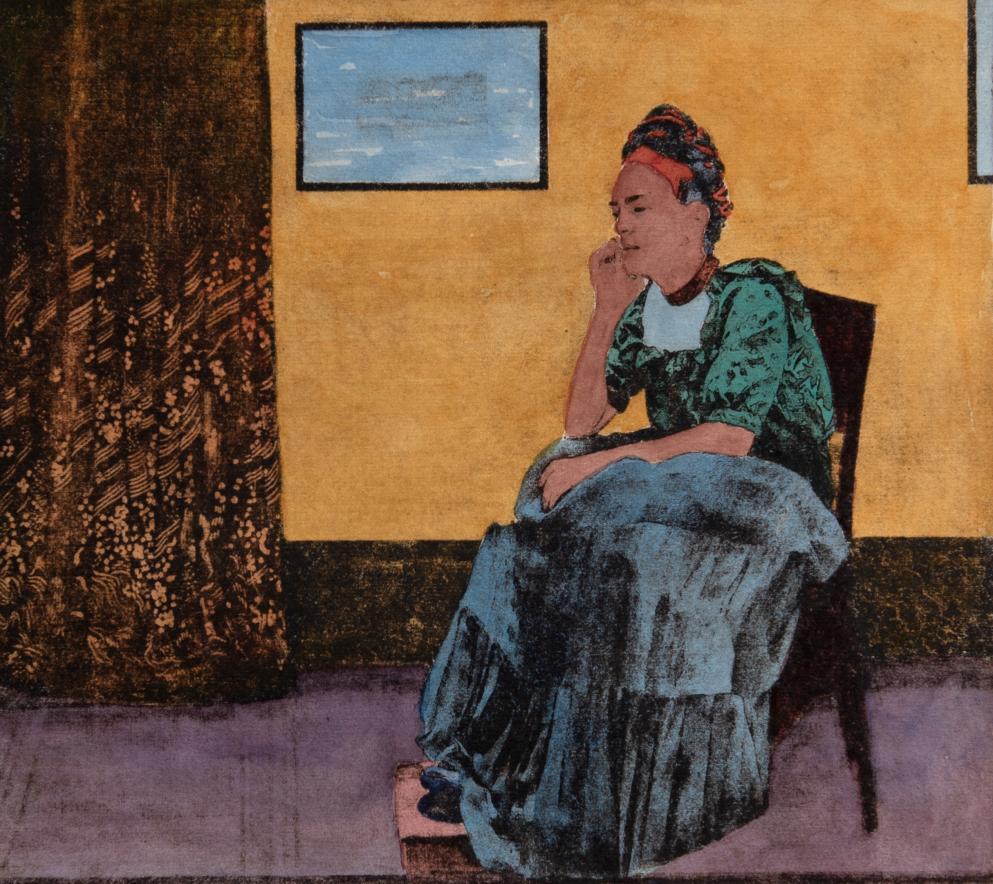
Diego’s Wife, 2025, Etching and watercolor, 8 x 9 inches
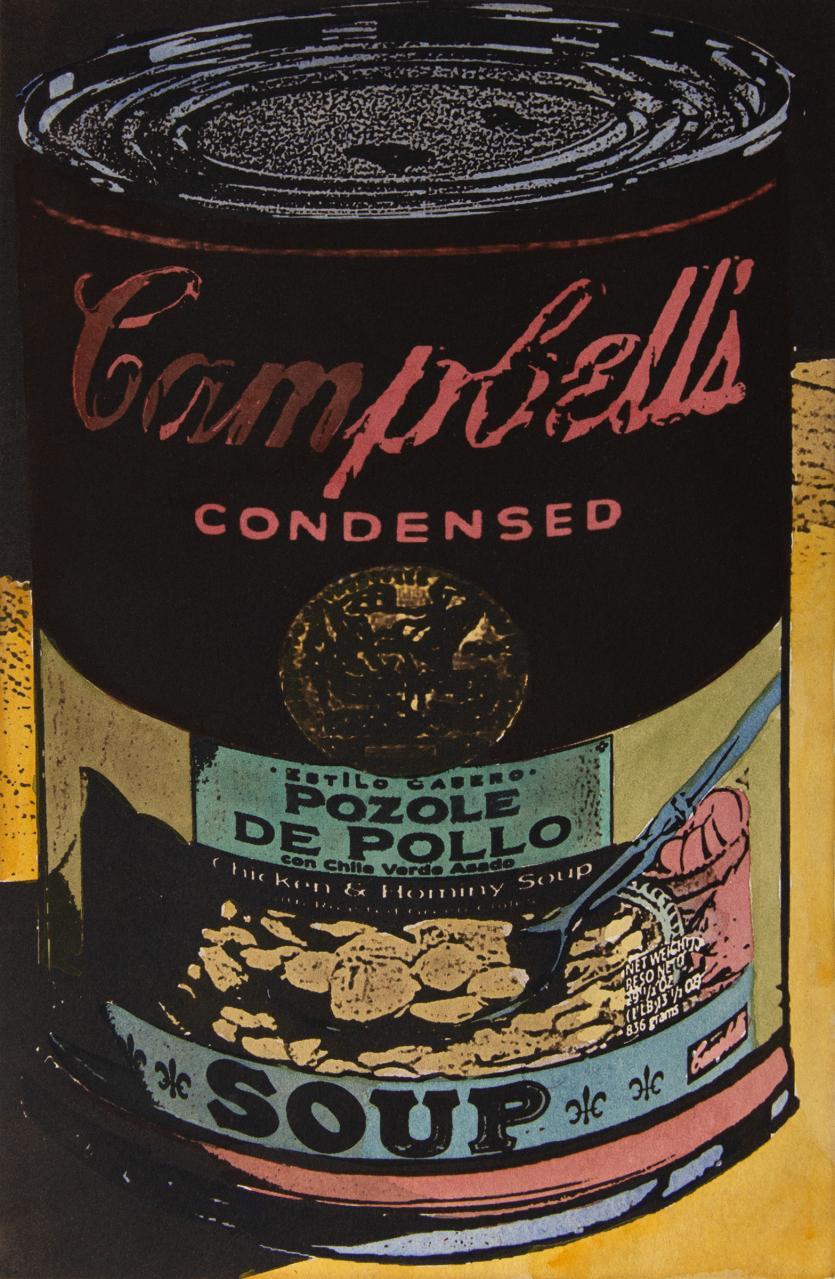
Campbell’s Pozole, 2025, Etching and watercolor, 9.5 x 6.25 inches
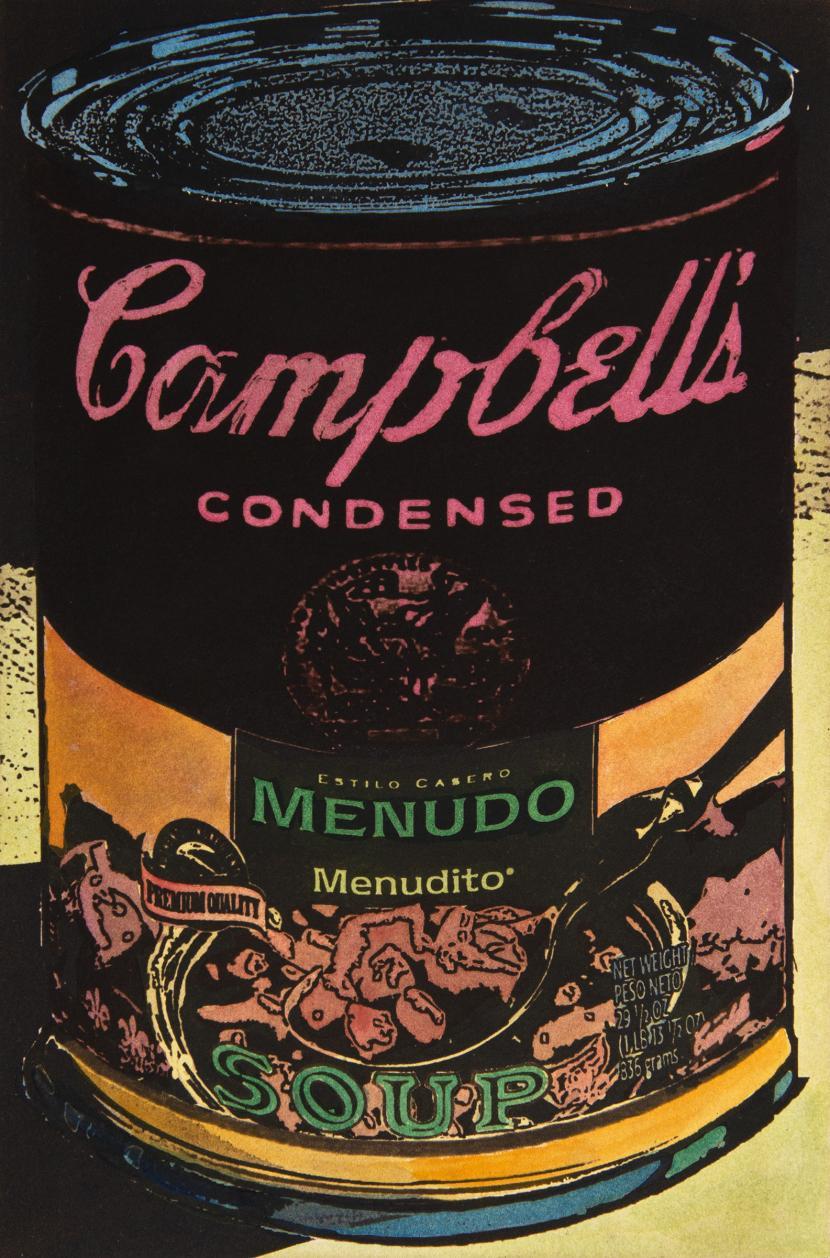
Campbell’s Menudo, 2025, Etching and watercolor, 9.5 x 6.25 inches
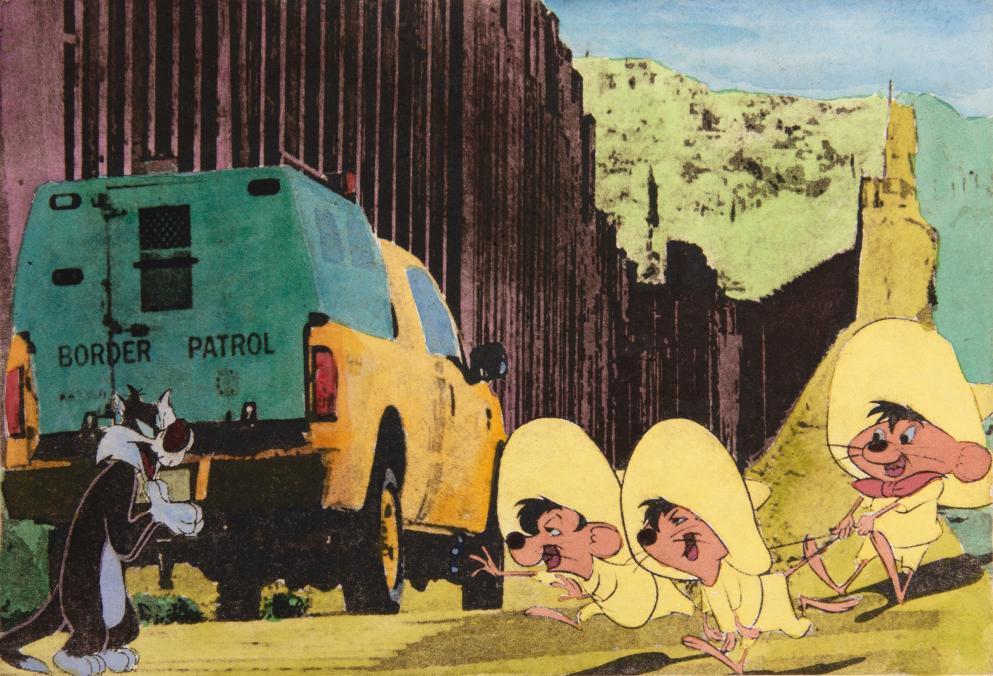
Speedy at the Border, 2025, Etching and watercolor, 7 x 10.25 inches
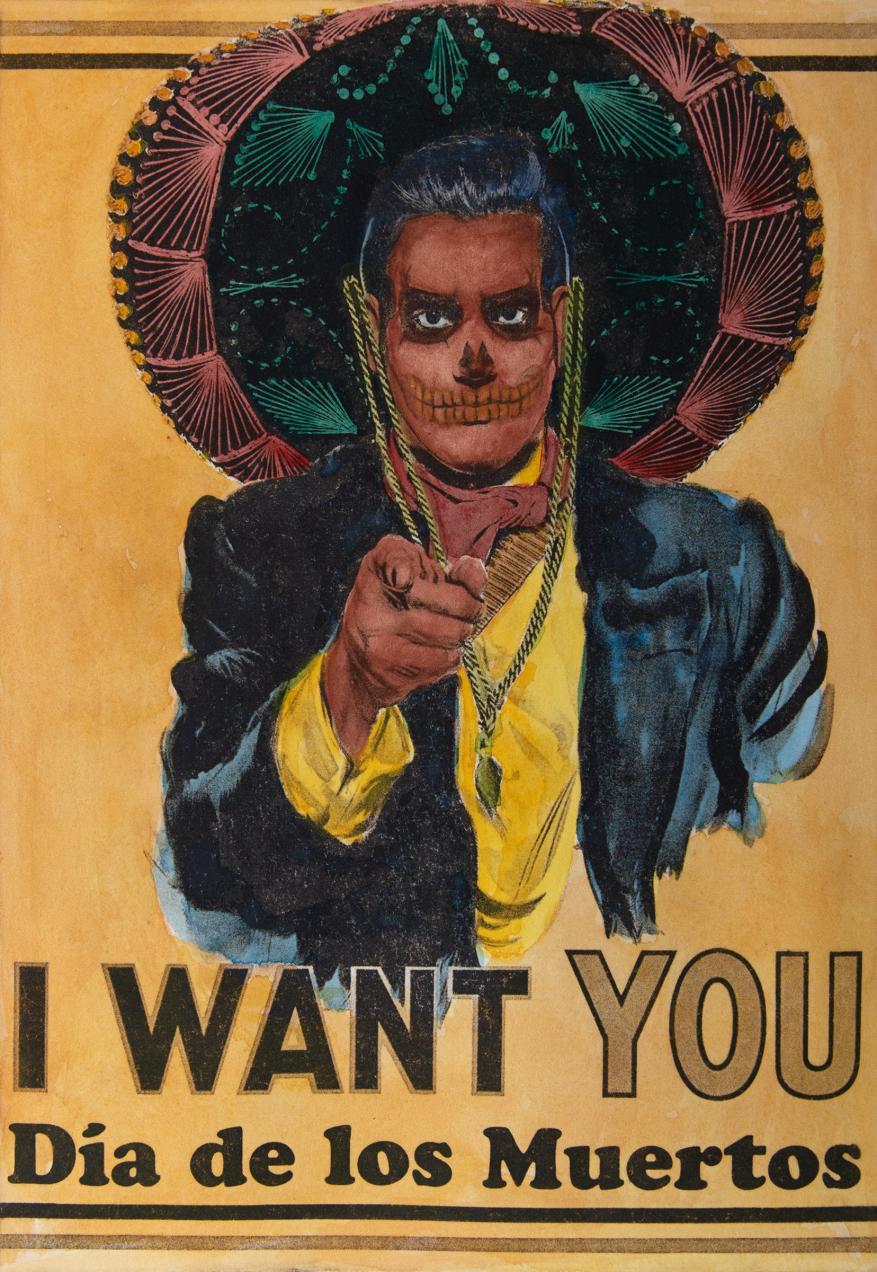
I Want You, Dia de los Muertos, 2025, Etching and watercolor, 9.75 x 6.75 inches
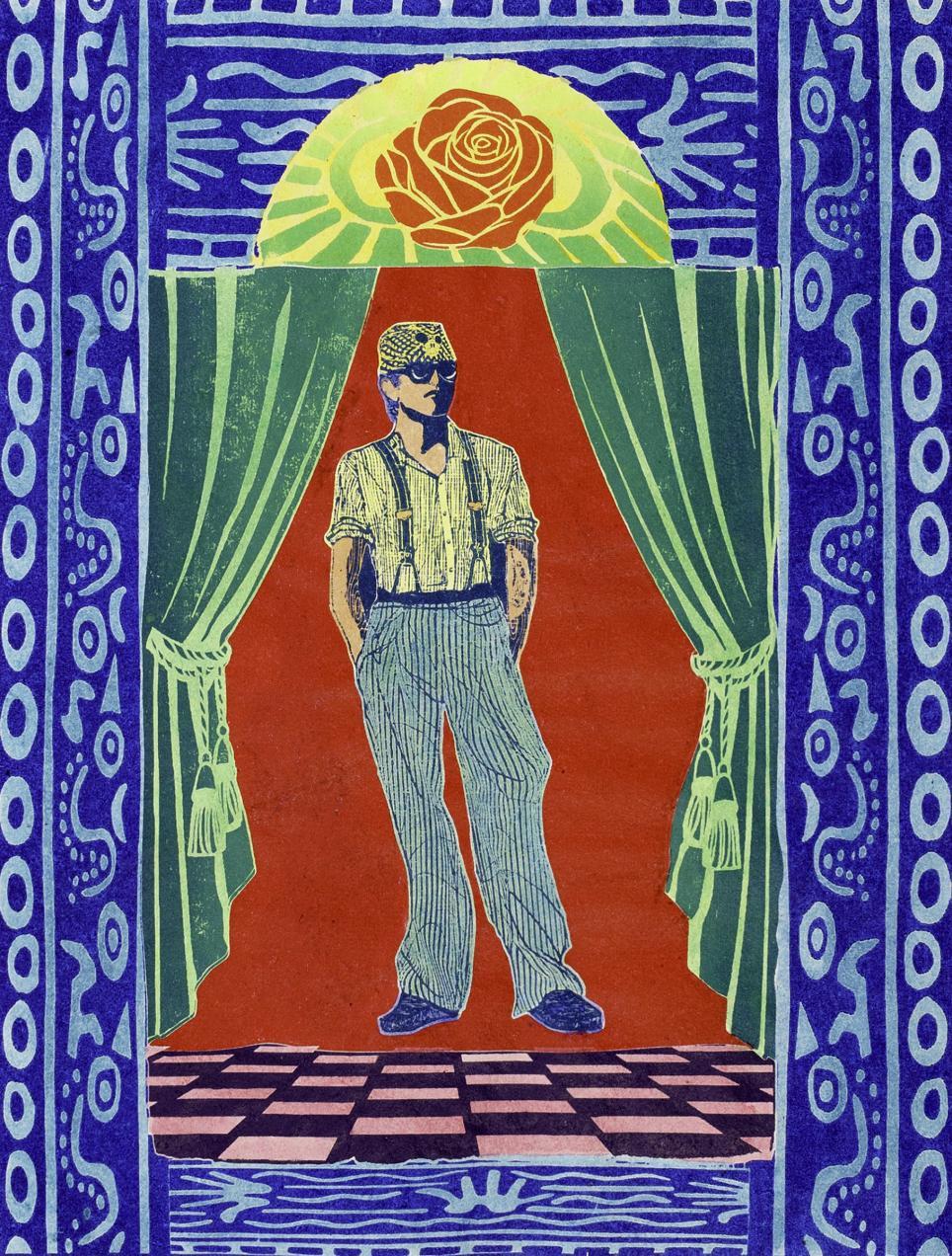
San Cholo, 2025, Woodblock and watercolor, 16 x 12 inches
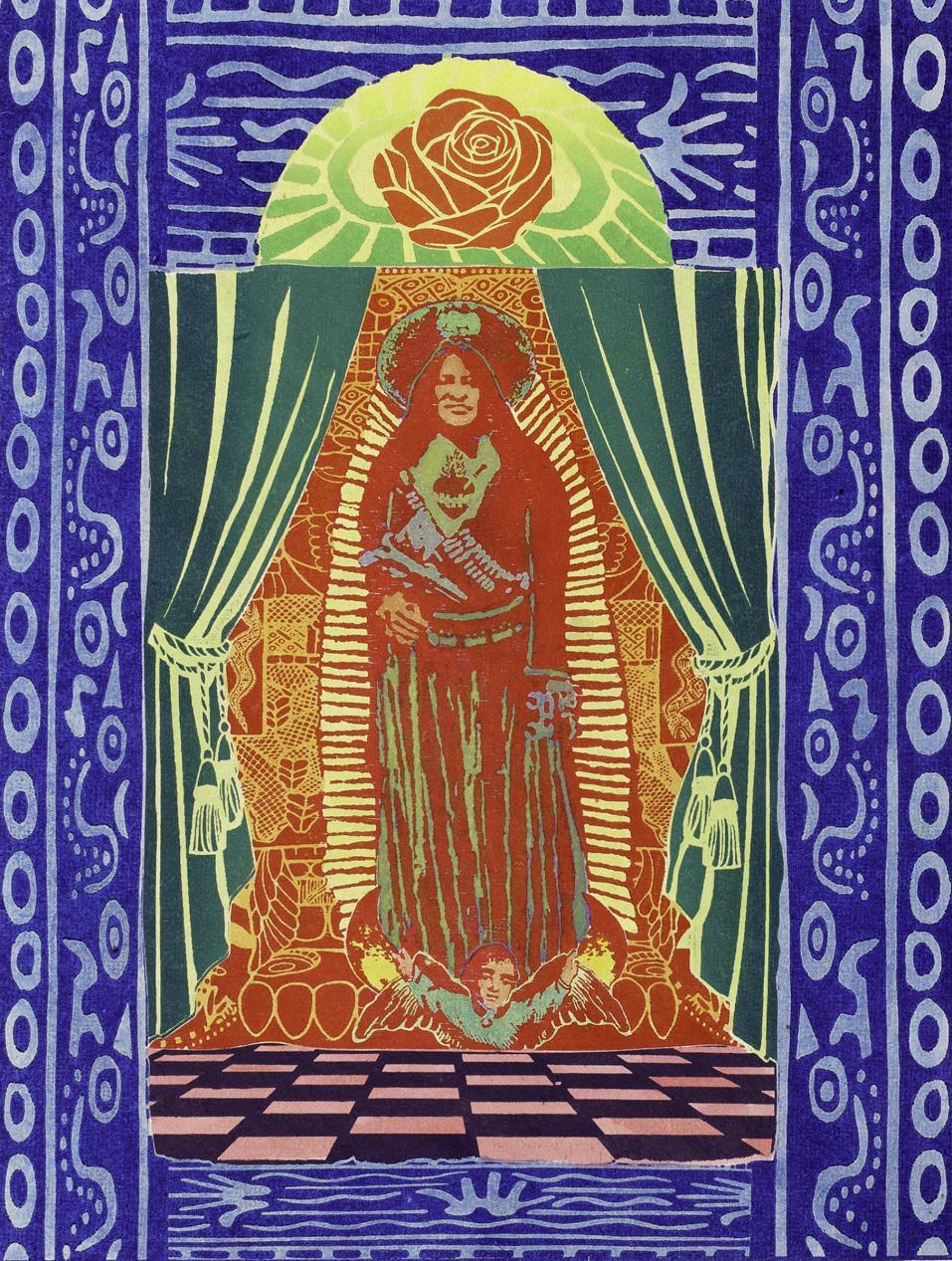
Santa Malinche, 2025, Woodblock and watercolor, 16 x 12 inches

Bonampak Cholo, 2024, Woodblock, 36 x 29 inches, 3/10
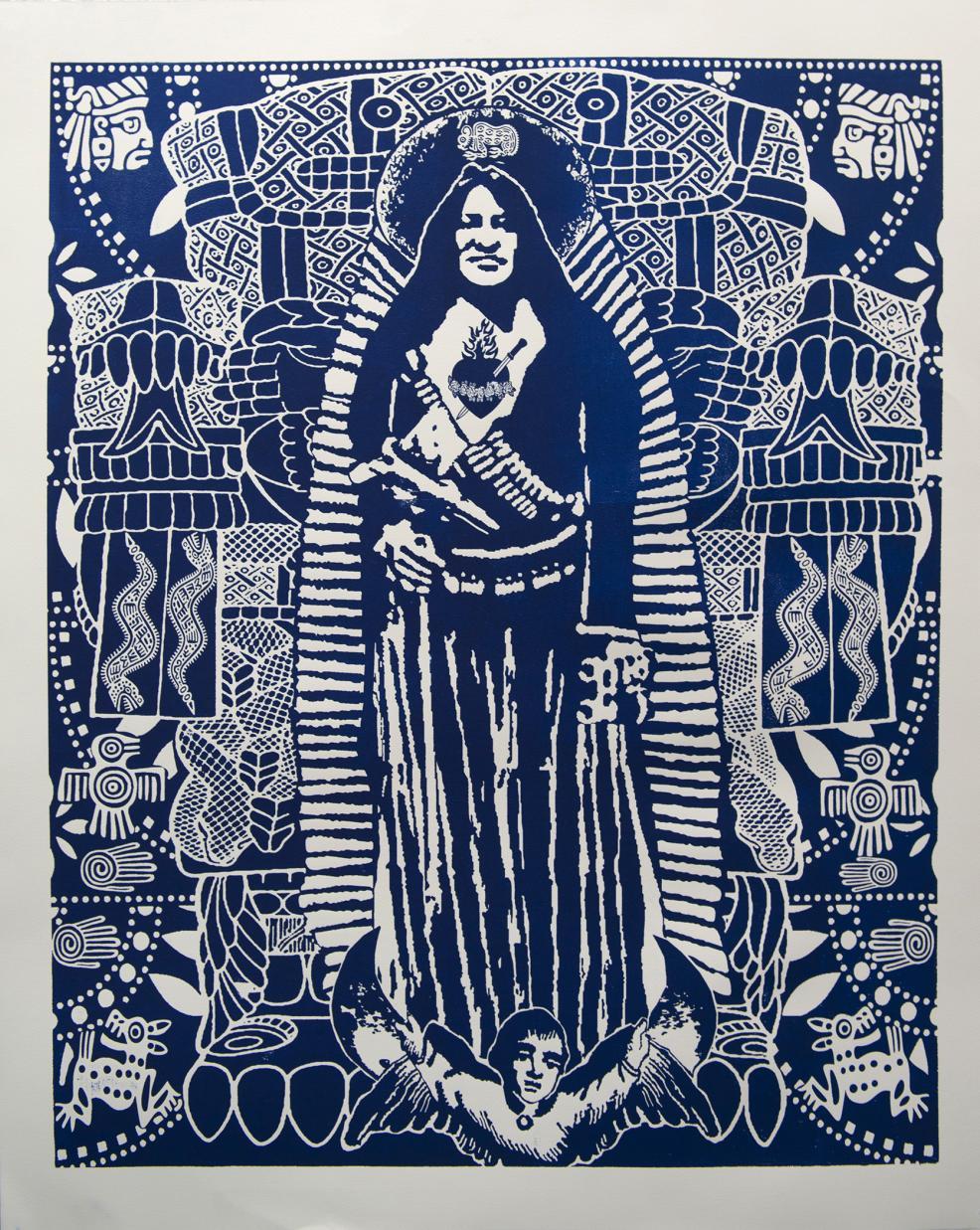
Nuestra Señora de la Malinche, 2022, Woodblock, 36 x 29 inches, 3/7
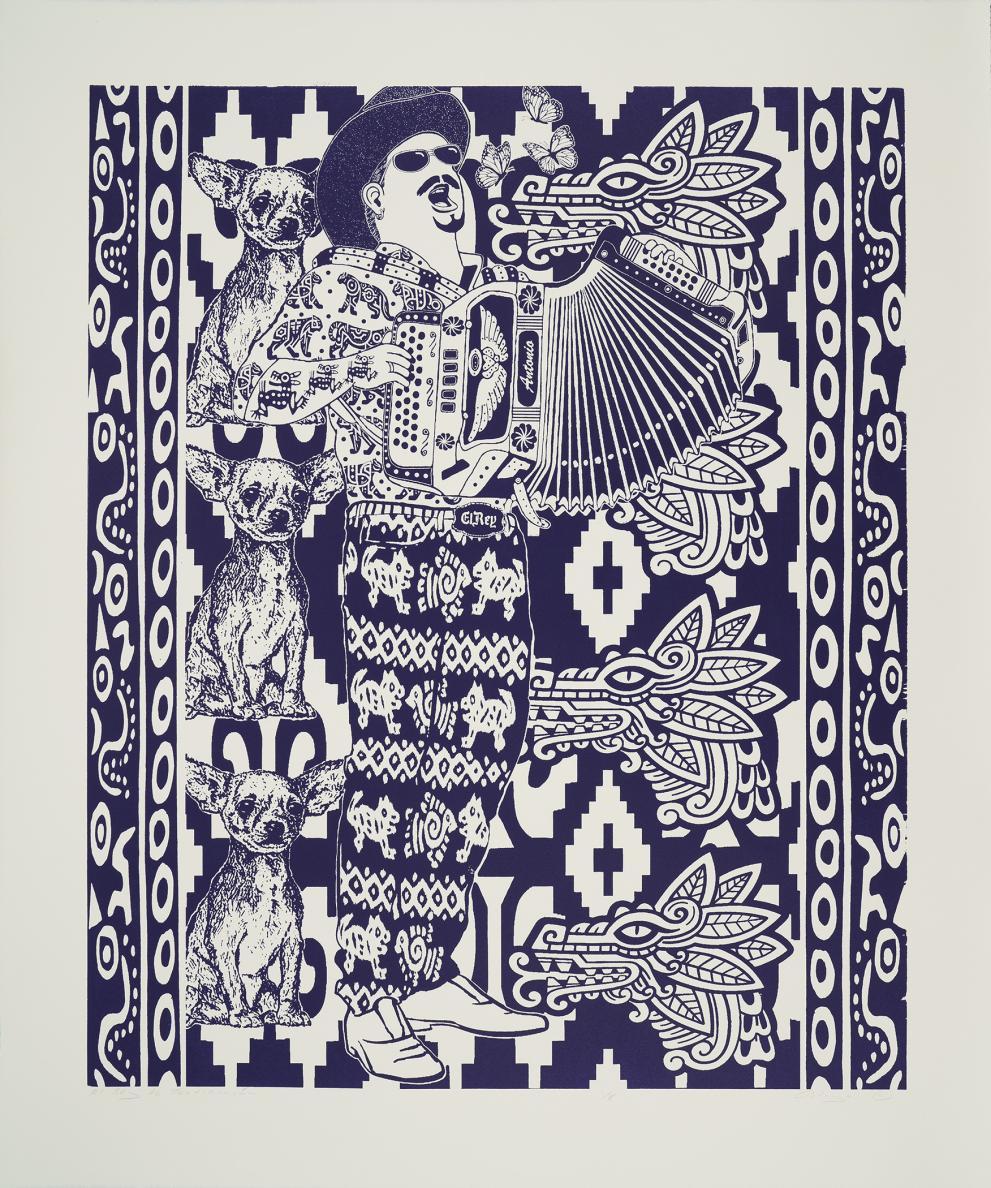
El Rey de Teotihuacán, 2025, Woodblock, 36 x 29 inches, 3/8
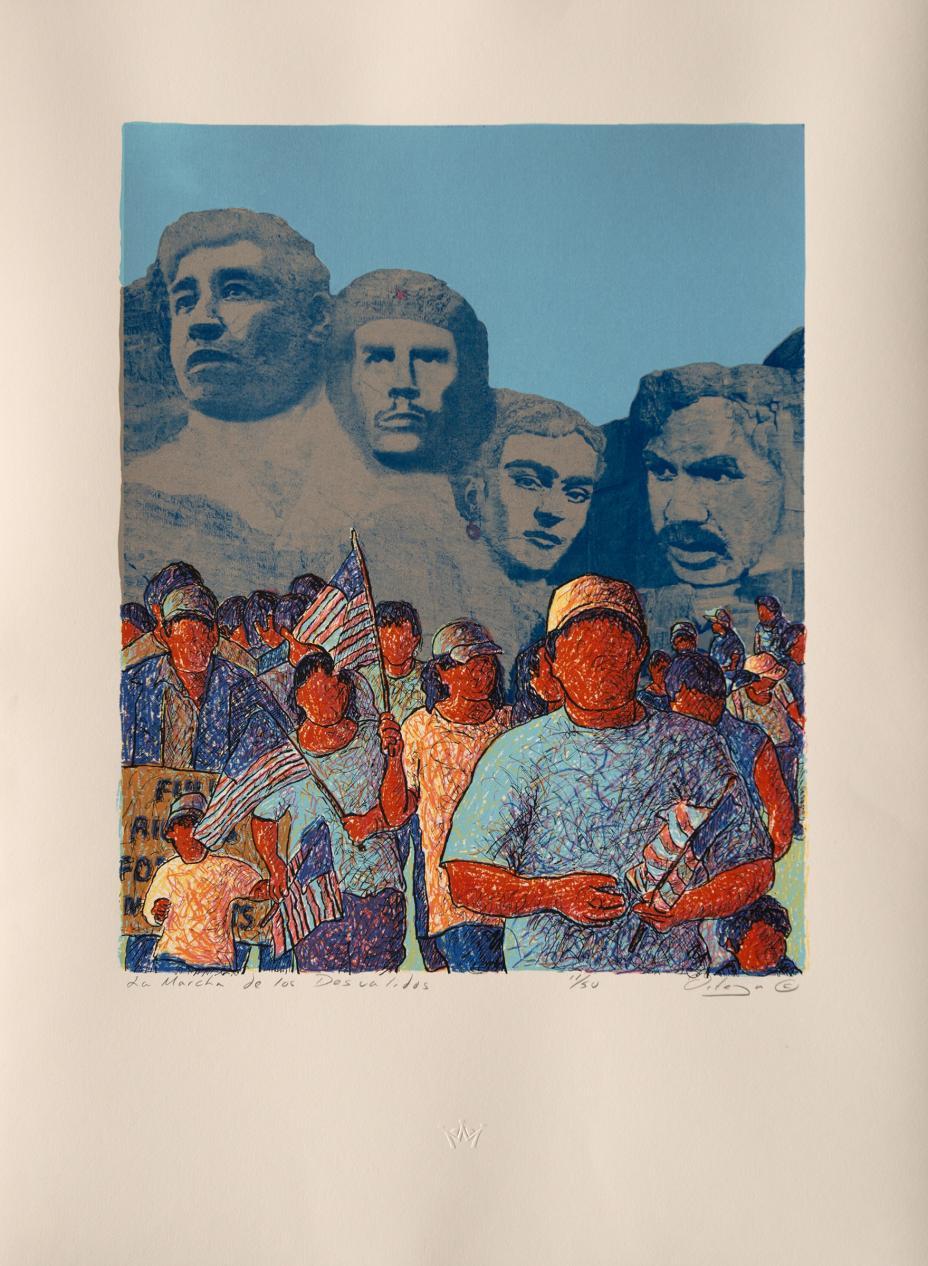
La Marcha de los Desvalidos, 2010, Silkscreen, 20 x 16 inches, 11/50
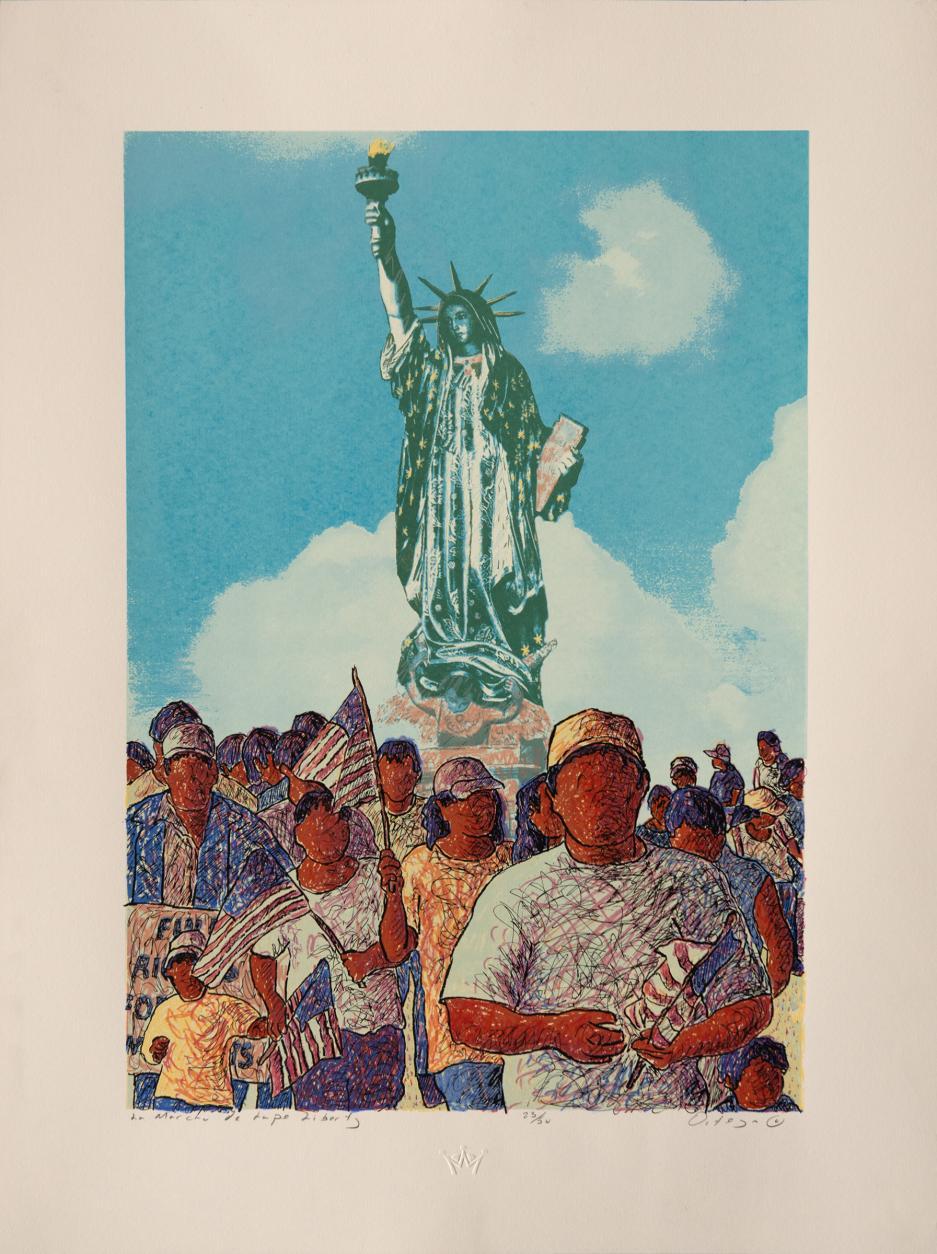
La Marcha de Lupe Liberty, 2006, Silkscreen, 23 x 16 inches, 23/50
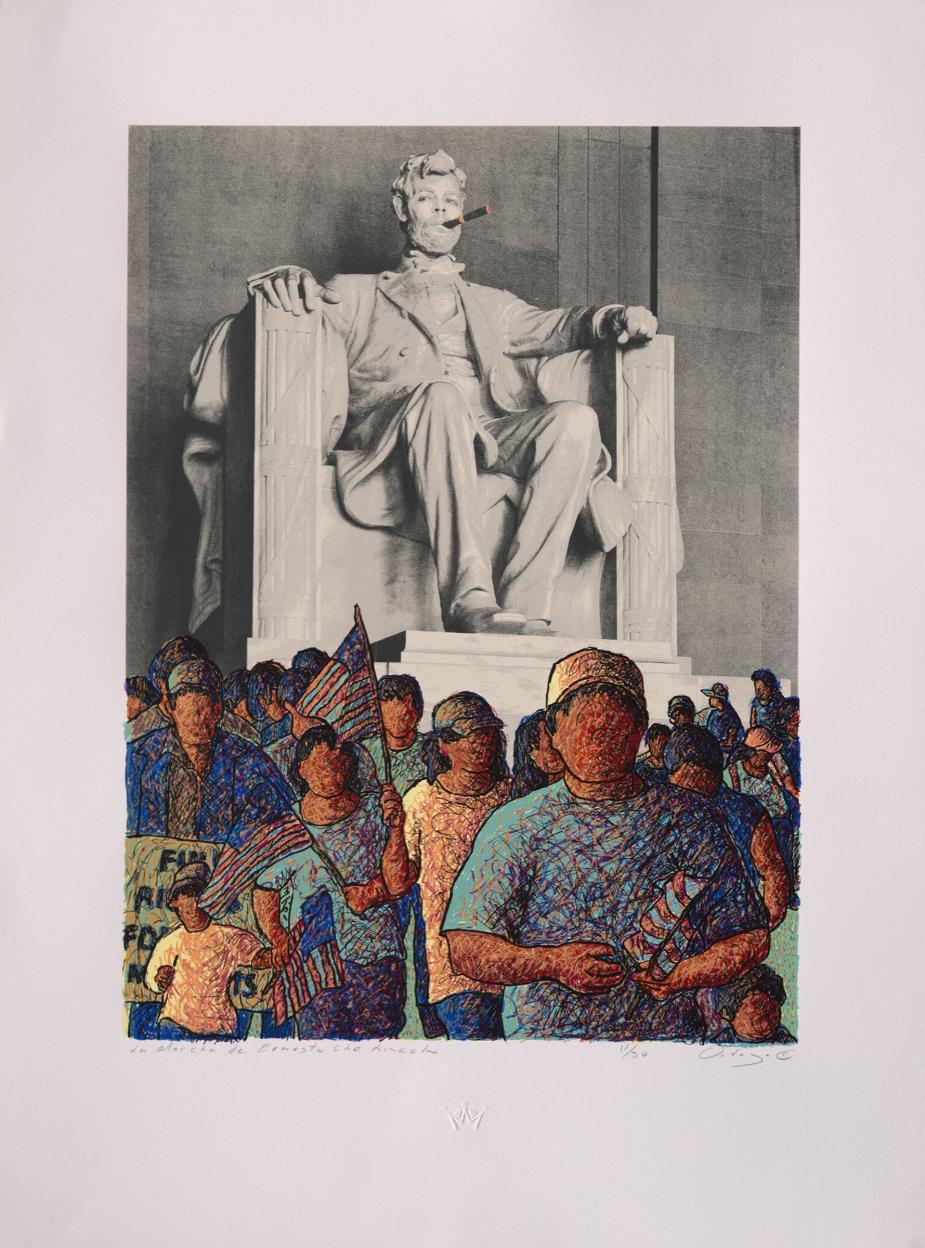
La March de Ernesto Che Lincoln, 2014, Silkscreen, 22 x 16 inches, 11/30
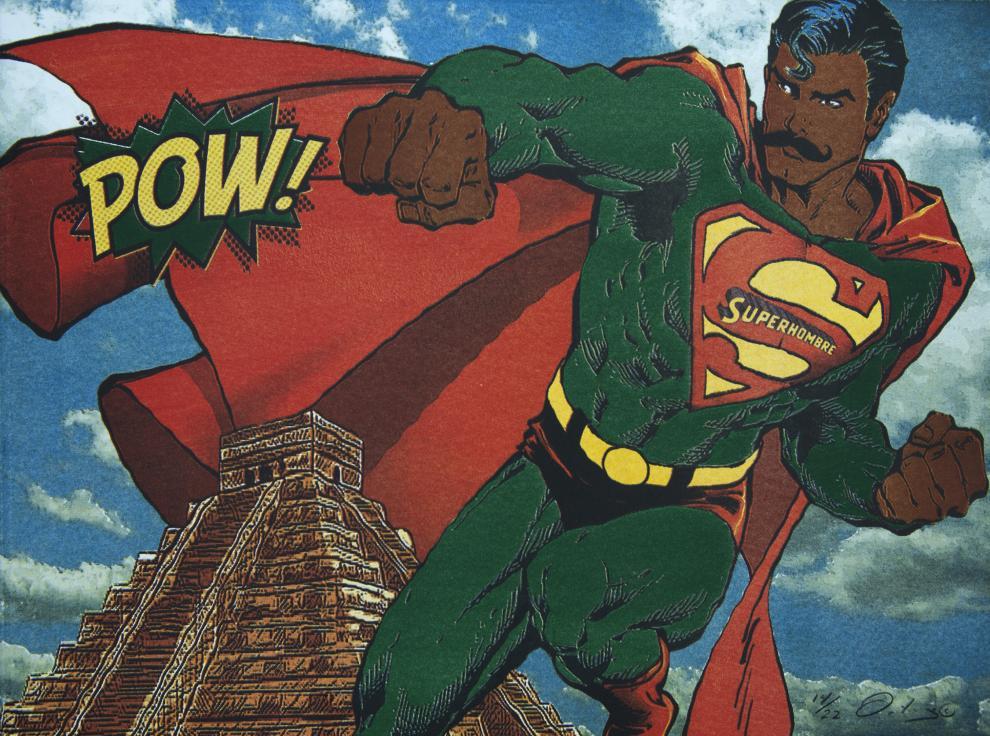
Super Hombre, 2015, Lithograph, 15 x 20 inches, 11/22
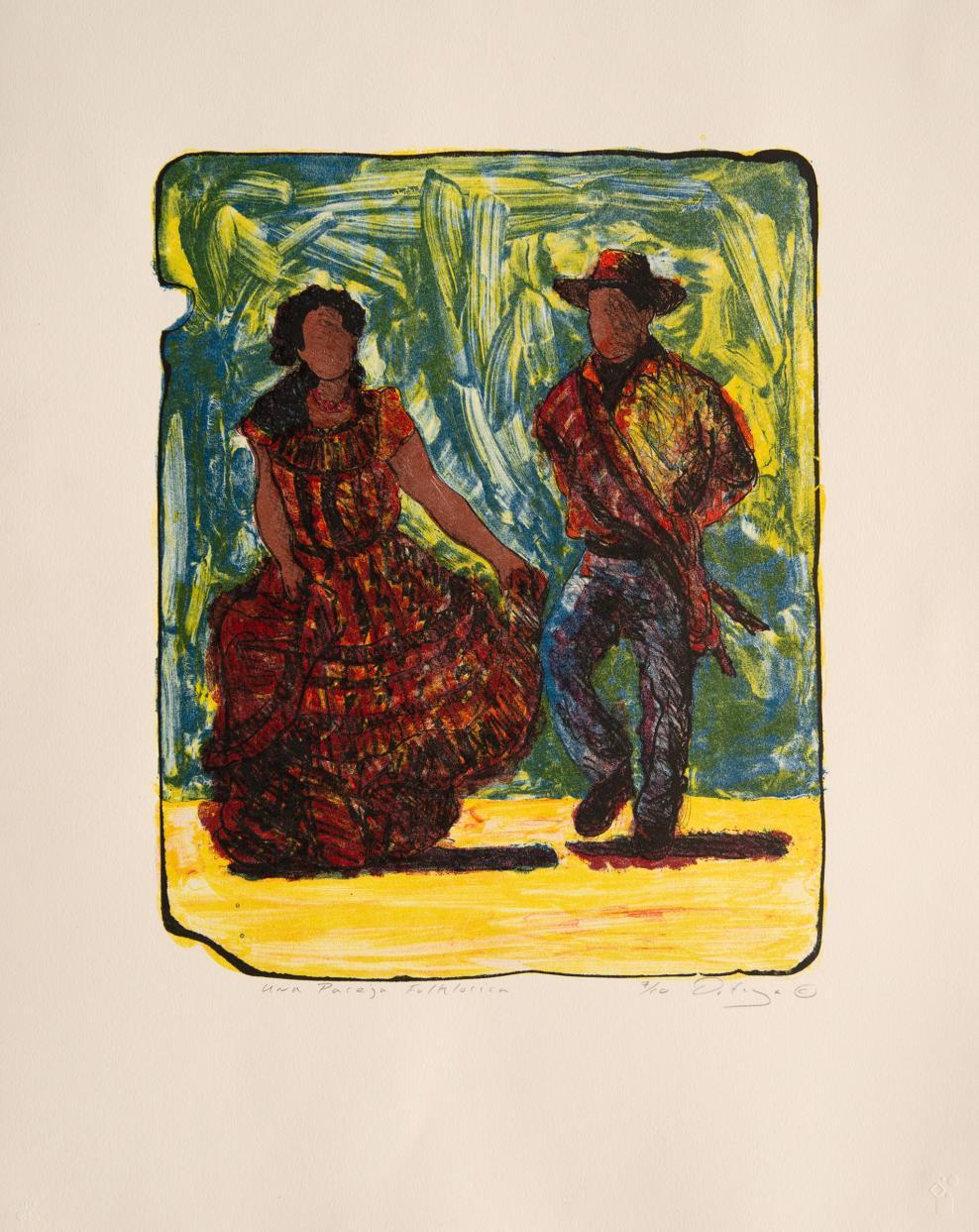
Una Pareja Folklorica, 2018, Lithograph, 15.75 x 12.75 inches, 7/10
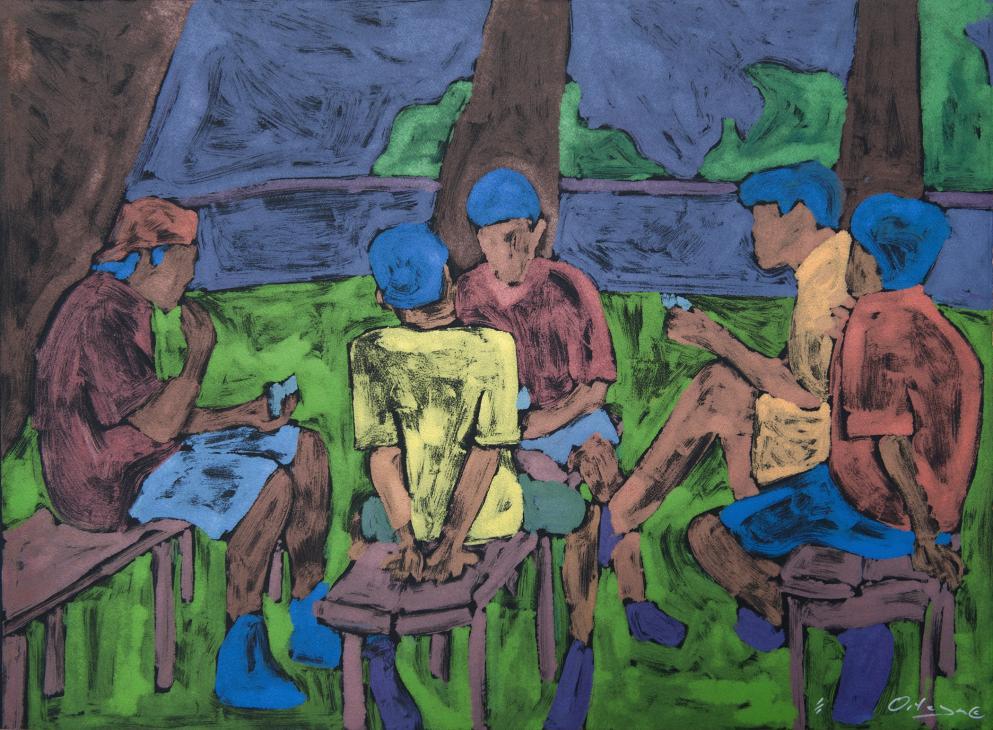
Dreamers, 2020, Monotype, 22 x 30 inches
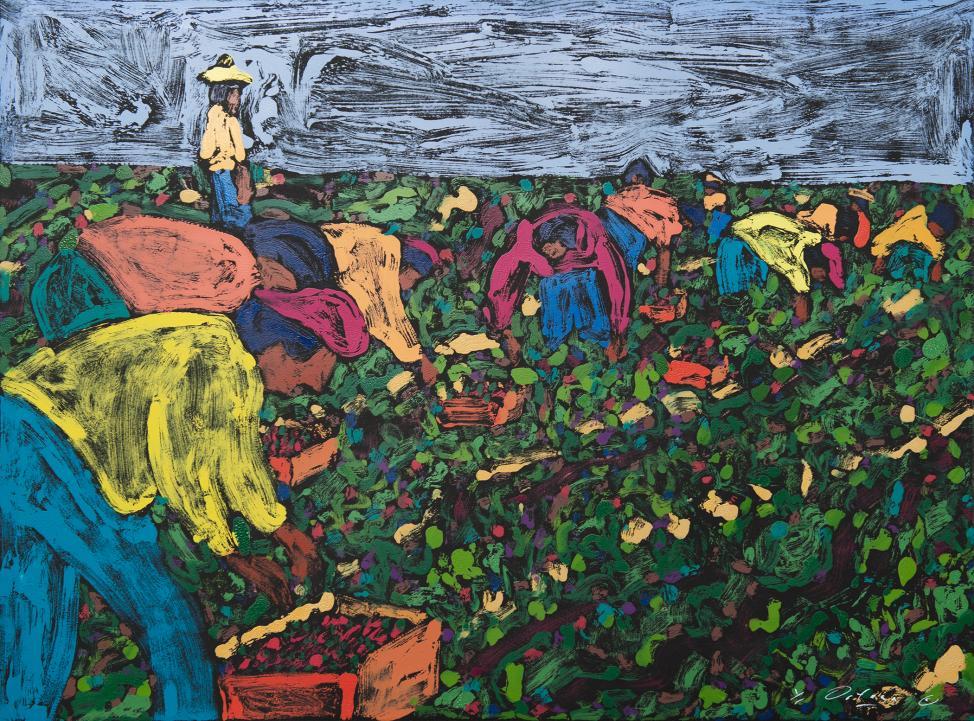
Los Trabajadores de San Luis, 2020, Monotype, 22 x 30 inches
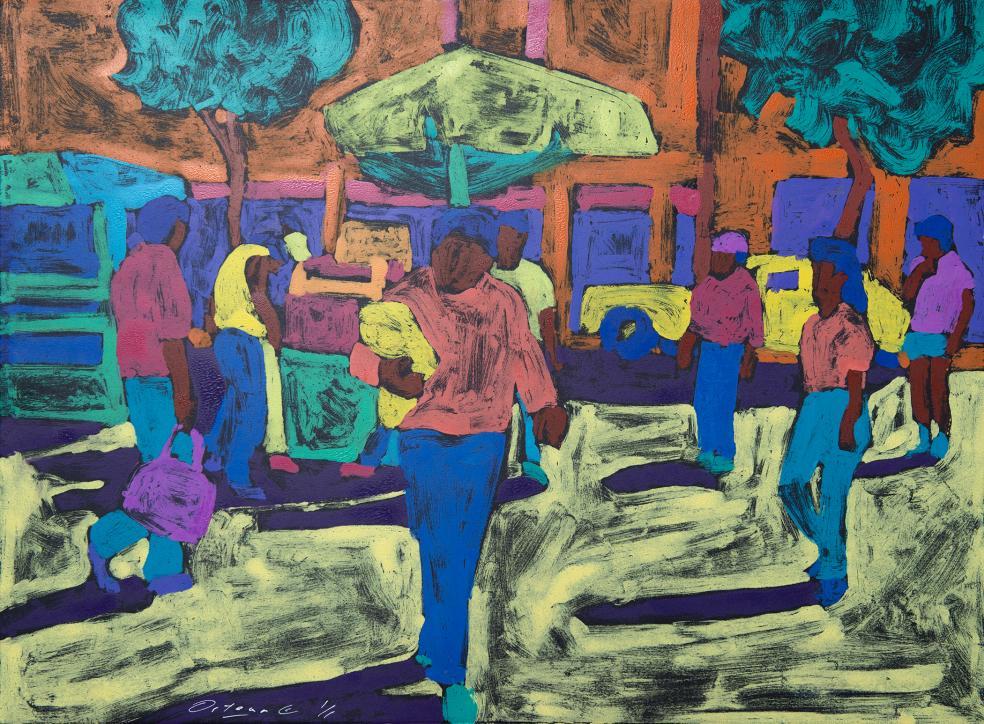
El Parasol Verde, 2020, Monotype, 22 x 30 inches
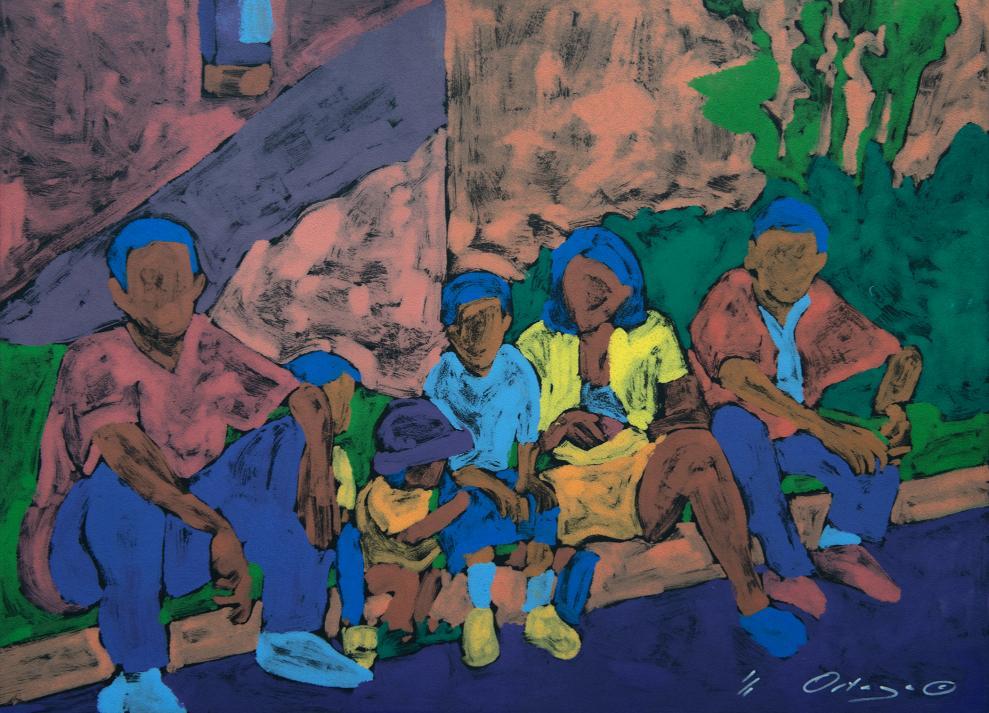
La Familia de Guadalupe, 2020, Monotype, 21.5 x 30 inches
SYLVIA MONTERO ARTWORKS
Sylvia Montero
Biography
Sylvia Montero is a Denver native and urban Indigenous artist whose work is deeply rooted in her Native American and Mexican heritage. Her creative journey began as a modern dancer, trained by Jane Tannebaum of the Martha Graham Dance Company. After the birth of her son, Sylvia transitioned into the visual arts, developing a prolific career in mixed media, printmaking, photography, and painting.
A committed community activist since the age of 13, Sylvia has worked with organizations such as Servicios de la Raza, Safehouse for Battered Women, and Mi Casa Women’s Resource Center. Her lifelong dedication to social justice continues to shape her artistic vision. Since 1992, Sylvia has explored themes of identity, cultural memory, and the human condition through a visual language that blends realism and abstraction. Influenced by Southwest Indigenous art and American Expressionism, she often combines photography with traditional printmaking techniques, particularly solar plate etching.
Her work has been exhibited widely regionally, nationally, and internationally including at the Fort Collins Museum of Art, Colorado Springs Fine Arts Center, Museo de las Americas in Denver, Sangre de Cristo Arts Center in Pueblo, and the Arvada Center for the Arts and Humanities.
Sylvia is also a dedicated educator with over 25 years of teaching experience. She has served on the roster of Young Audiences, the faculty of the Art Students League of Denver and Saint Francis Catholic School in Denver. She is a 1995 award recipient from the Rocky Mountain Women’s Institute and a former member of the international artist collective “Artnauts.” Her work has been featured in numerous publications and exhibitions across Colorado, the Southwest, Mexico, and beyond.
Artist statement
I have long dreamed of photographing Cuba with my 35mm camera. Havana presented a unique challenge, so visually rich that everywhere you look invites a photograph. For this series, I focused on capturing the everyday lives of Cuban and Mexican people, grounded in daily purpose and cultural, vibrancy.
Mexico, a place I’ve returned to many times, pulses with movement and energy an ideal environment for spontaneous, precise compositions. In both countries, I work quickly, always ready with my shutter speed set, striving to catch those fleeting, authentic moments of everyday life. My intention with photography is to produce honest images free of digital manipulation or distortion. Through the process of solar photo etching, I transform these photographs into a new medium, which I often enhance with hand-coloring and collage.
In my work, I need to express character, intellect, and spirit an understanding of indigenous and cultural beauty.
See more about Montero at YouTube: "I'm a bad girl. I'm not a conformer." Joy & Claire interview Sylvia Montero: https://youtu.be/b3n7QgLAha0?si=Ui3qpmPlfI5Ru8tW
Meet Sylvia Montero Artist: https://youtu.be/QvgS3qd-U_o
Contact: sfmonteroartist@cs.com
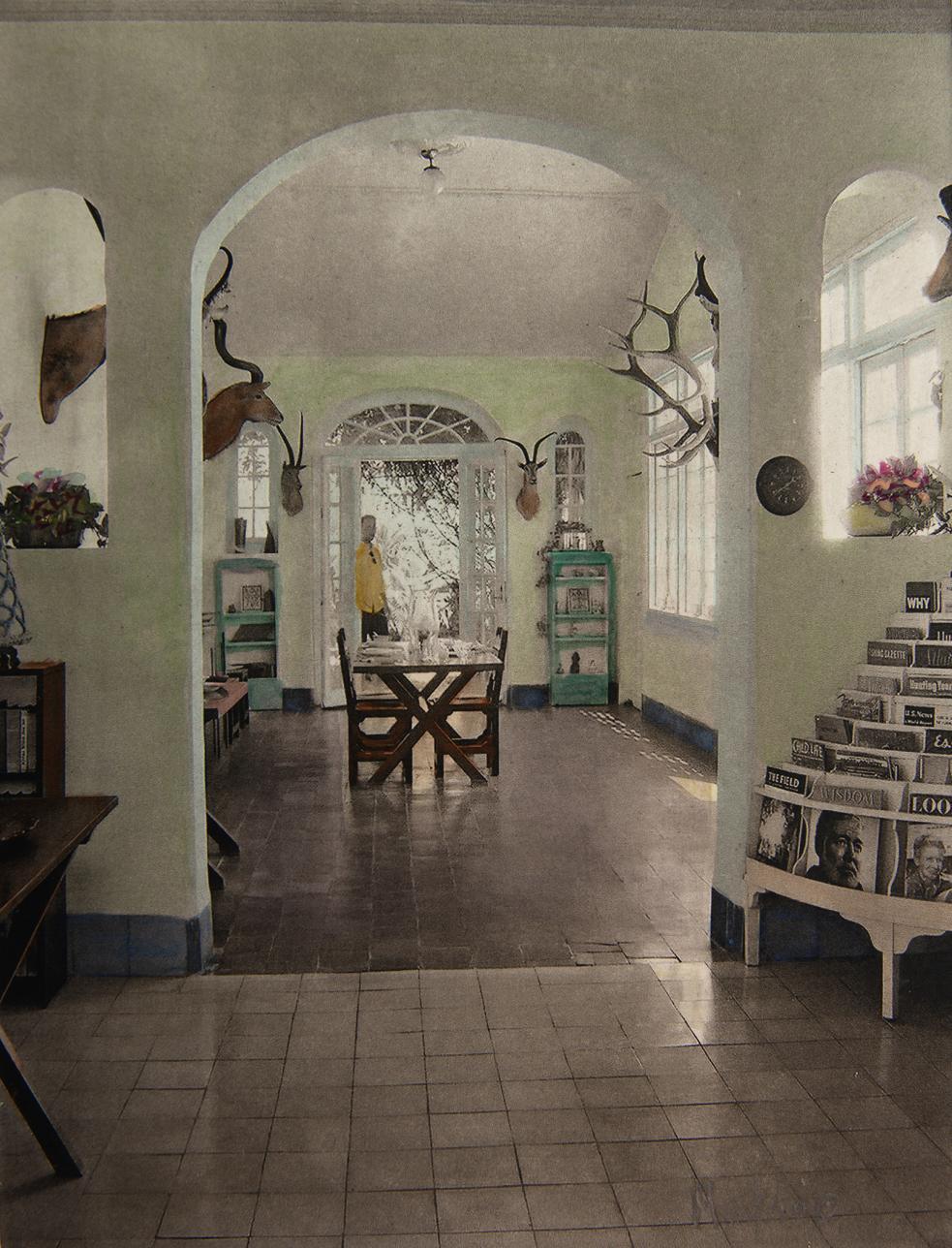
A Moveable Feast, 2023, Etching and watercolor, 9.75 x 7.5 inches
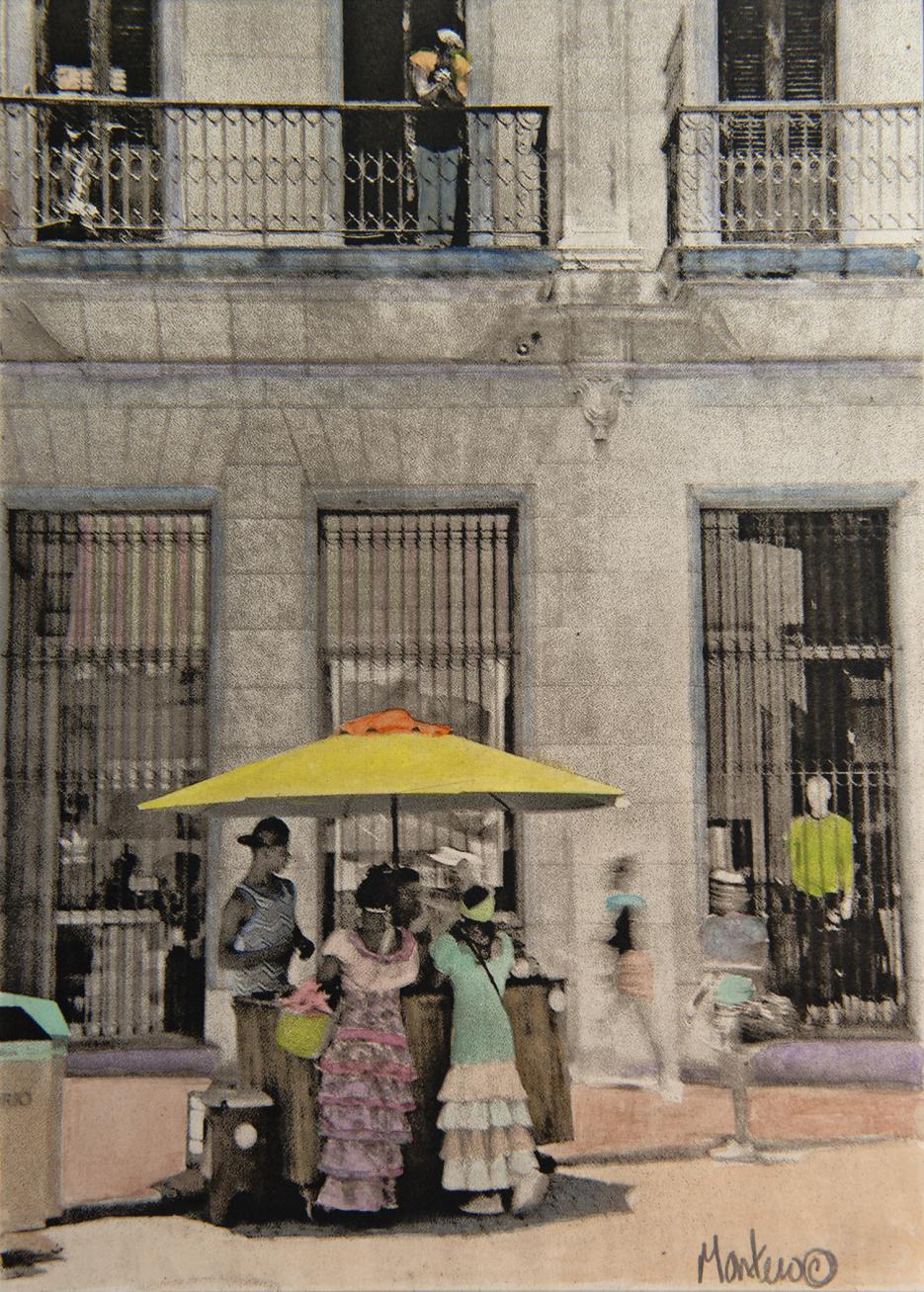
Un Helado en Havana, 2023, Etching and watercolor, 9.75 x 7 inches
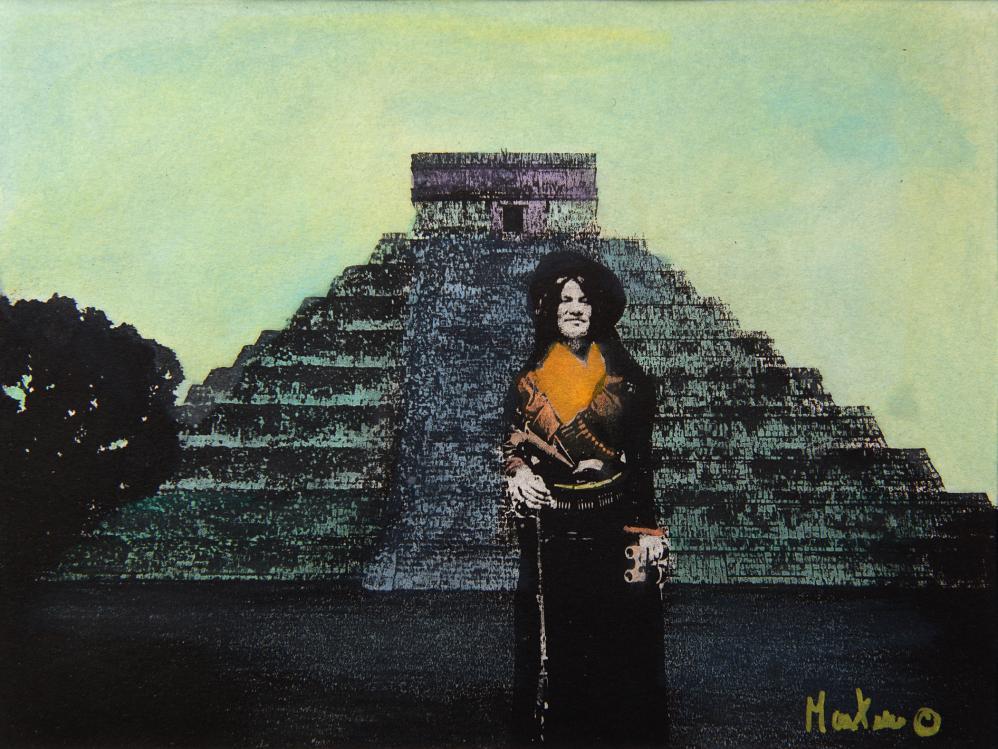
My Lucid Dream, 2023, Etching and watercolor, 7.5 x 9.75 inches
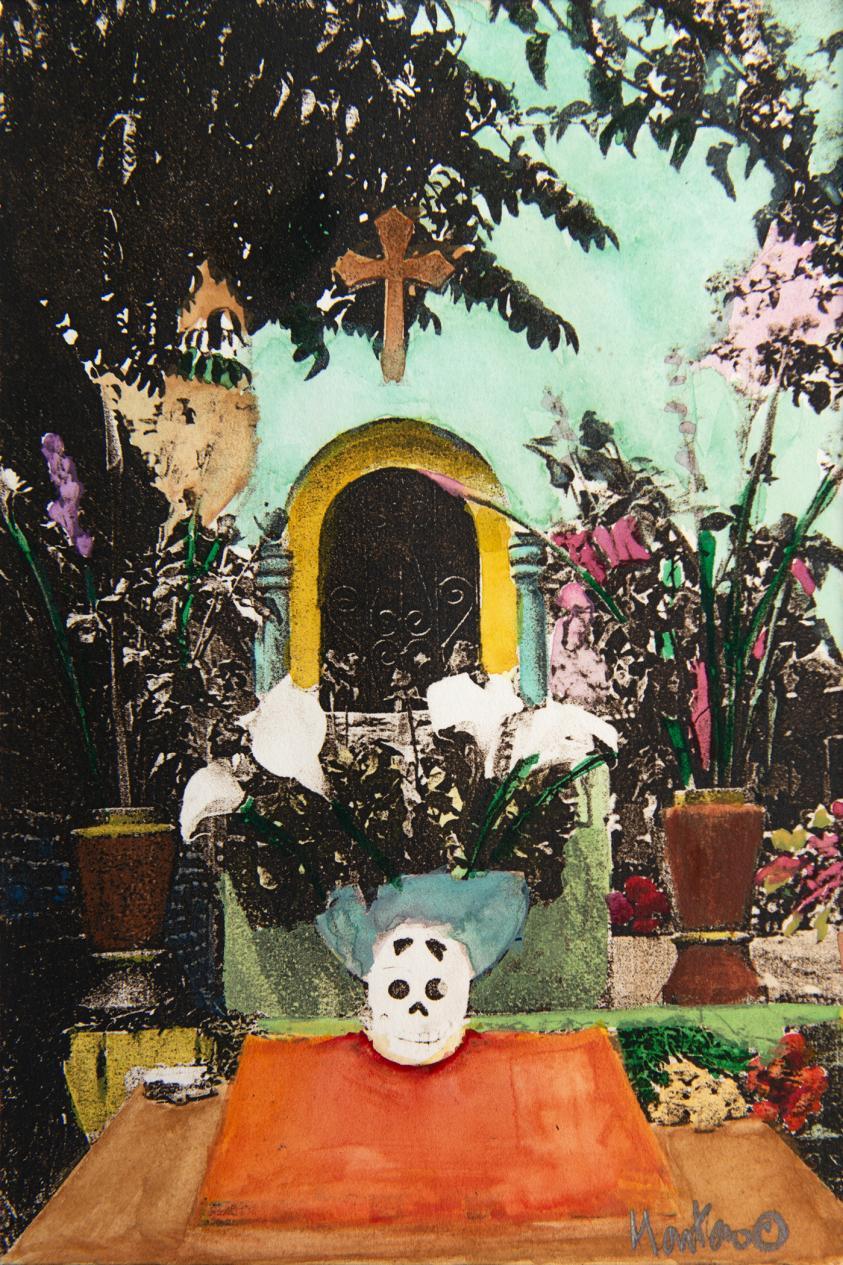
Cleaning of the Grave, 2024, Etching and watercolor, 7.75 x 5.25 inches
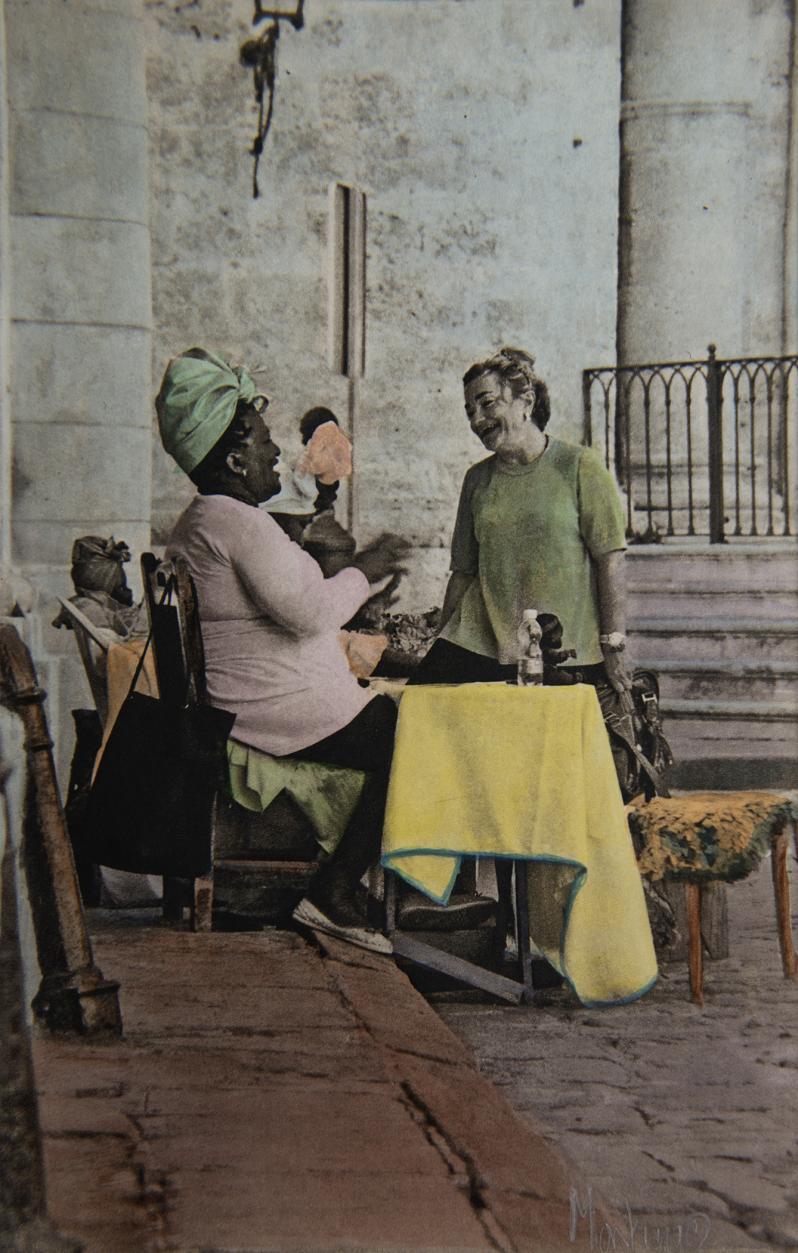
Dos Muñecas Havana, 2023, Etching and watercolor, 9.75 x 6.25 inches
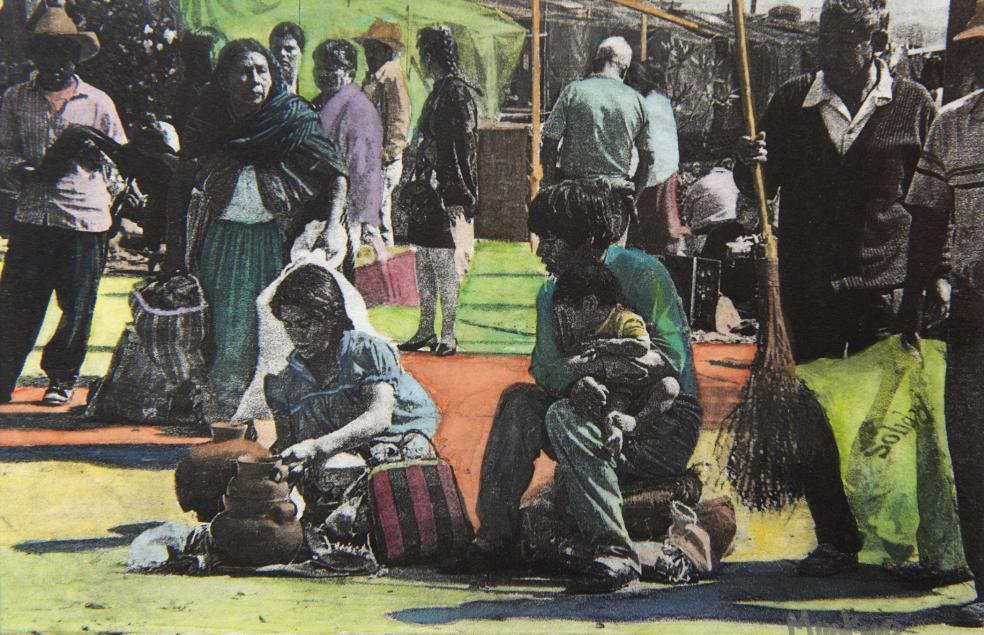
Market Day in Oaxaca, 2024, Etching and watercolor, 6.5 x 9.75 inches
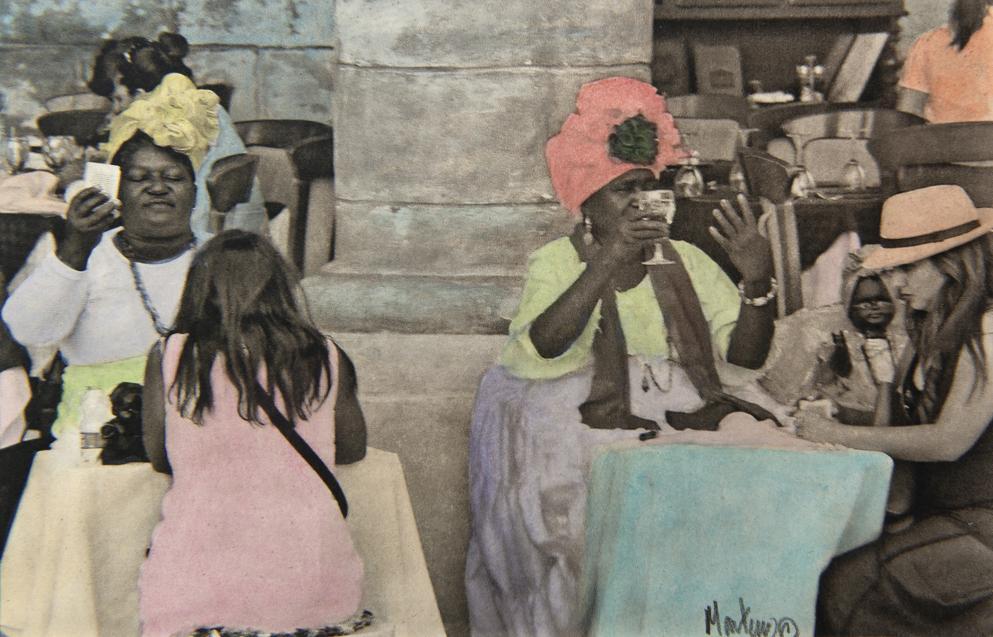
Seer, 2023, Etching and watercolor, 6.5 x 9.75 inches
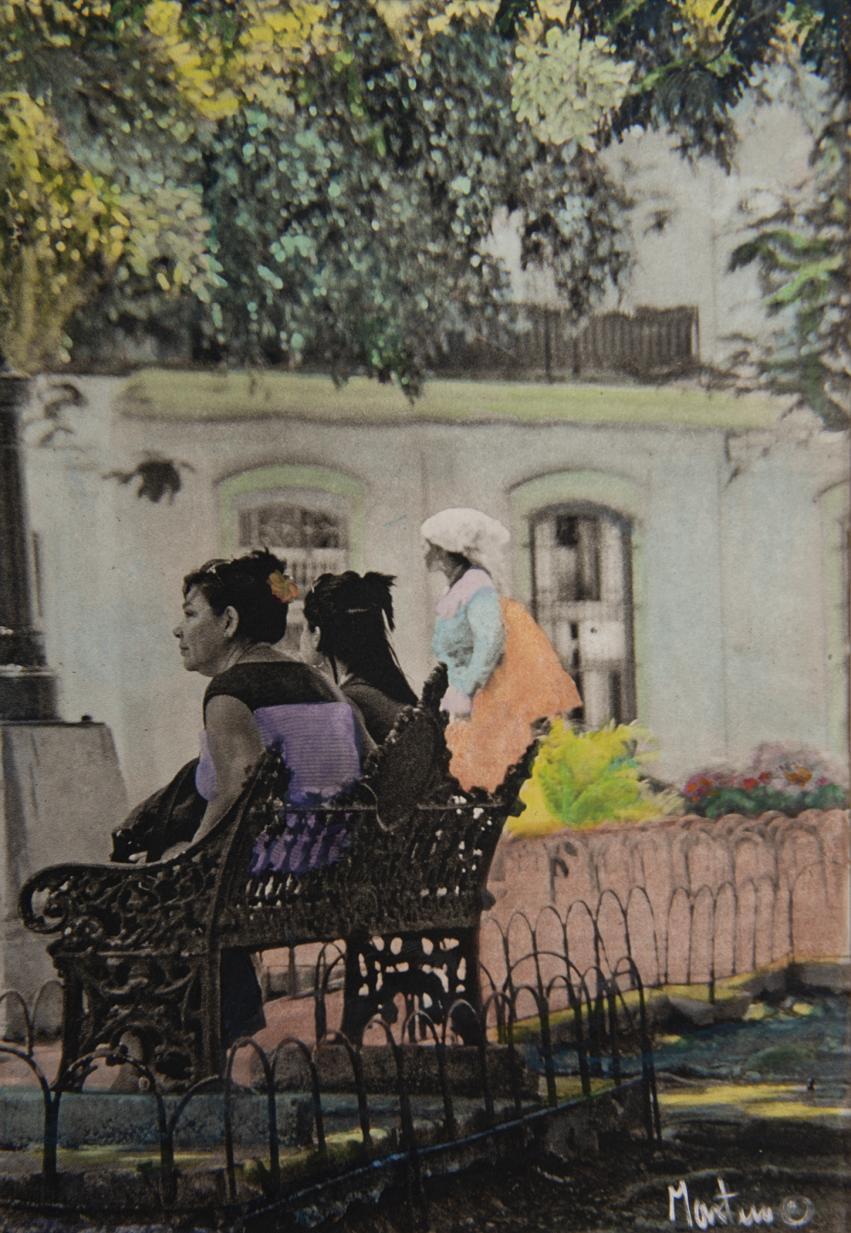
Women of Havana, 2023, Etching and watercolor, 9.75 x 7.75 inches
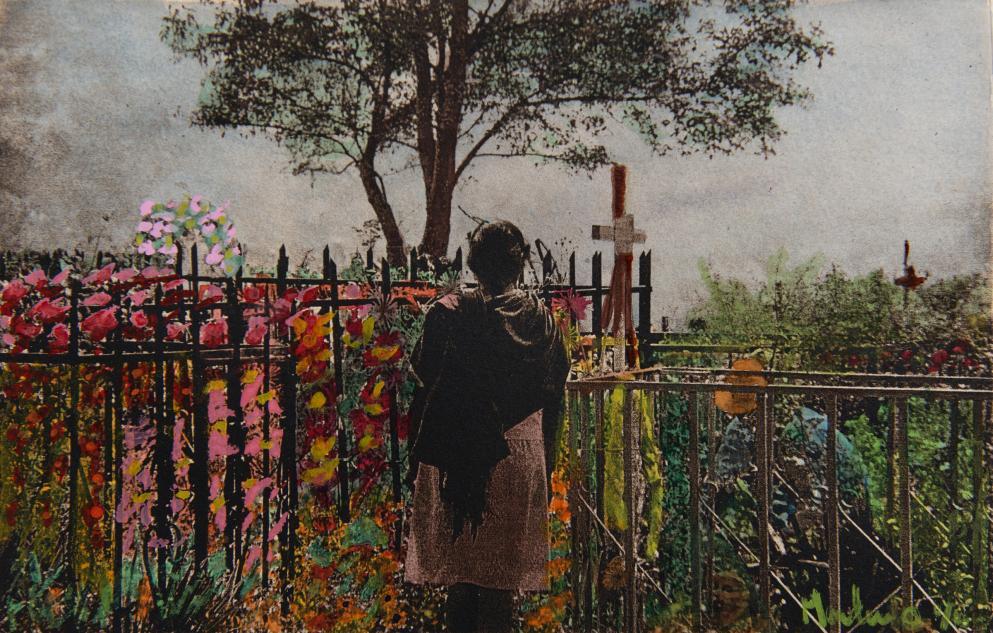
Birds of a Feather, 2025, Etching and watercolor, 6.5 x 9.75 inches
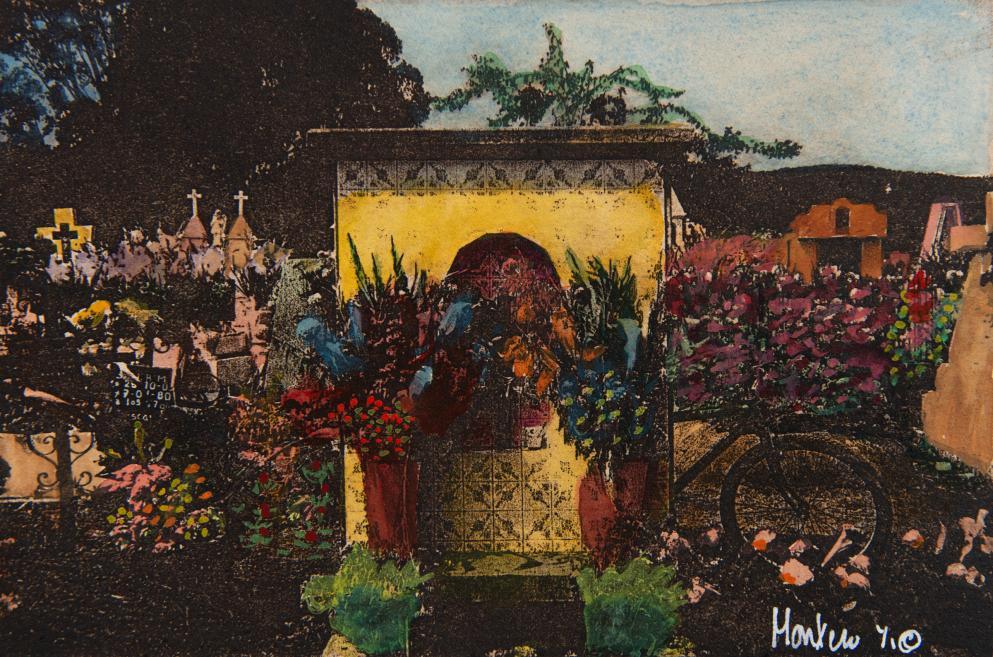
Bicycle Alone, 2025, Etching and watercolor, 5.75 x 8.625 inches
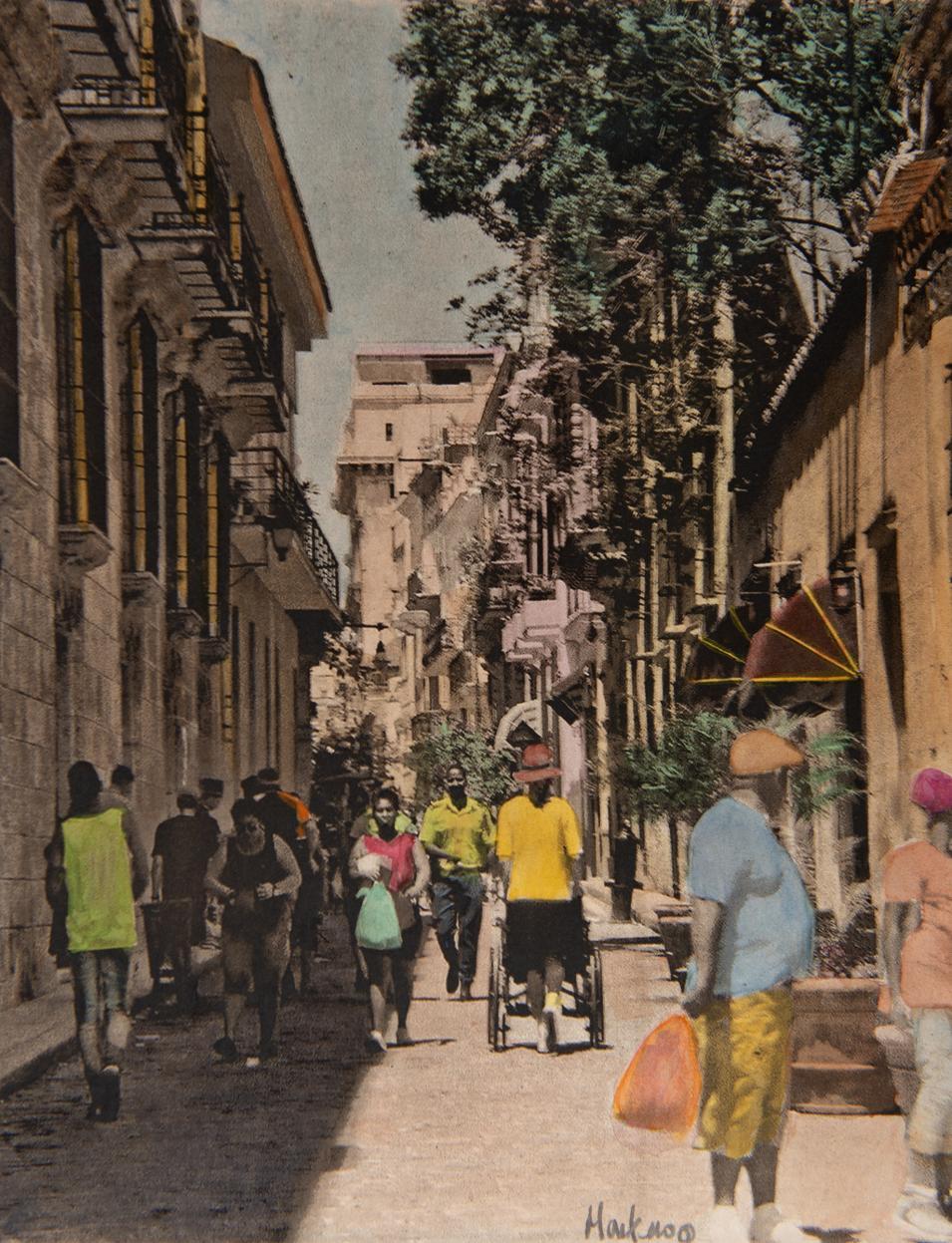
Havana Vieja, 2025, Etching and watercolor, 10 x 7.75 inches
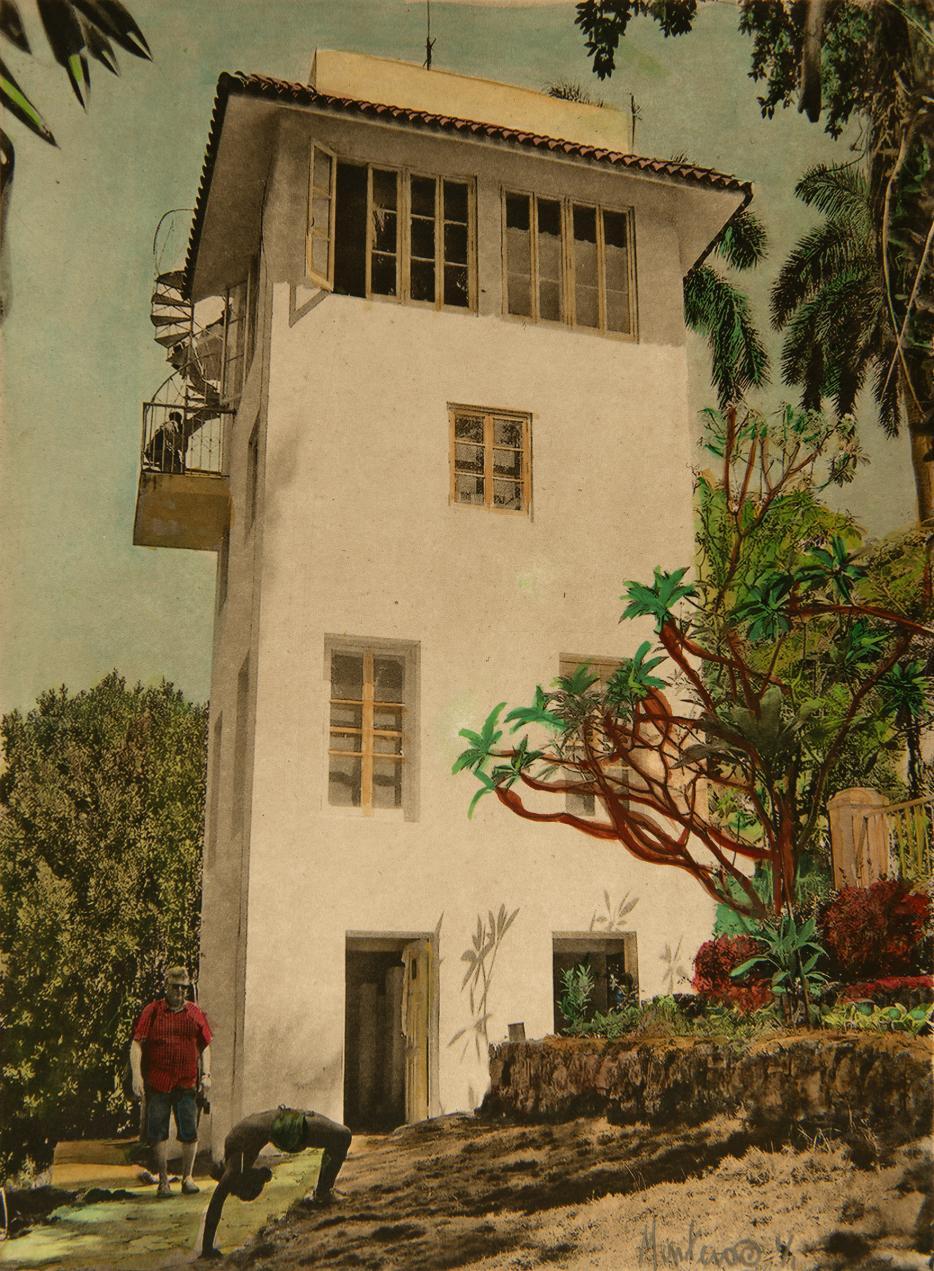
Hemingway’s Tower Fina Vigia, 2025, Etching and watercolor, 10 x 7.325 inches
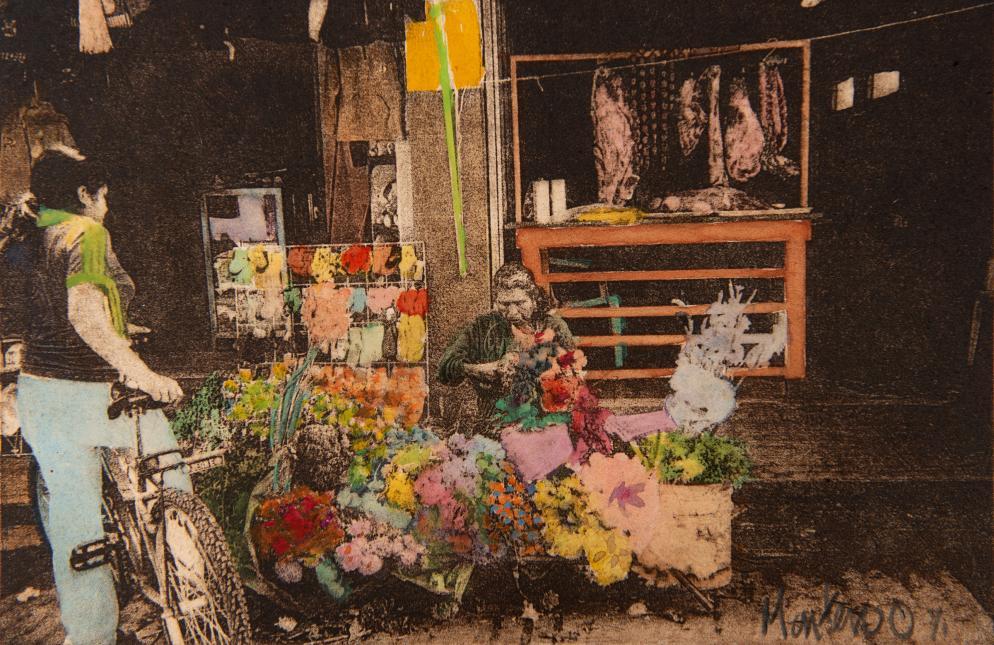
Flowers and Meat, 2025, Etching and watercolor, 5.75 x 8.625 inches
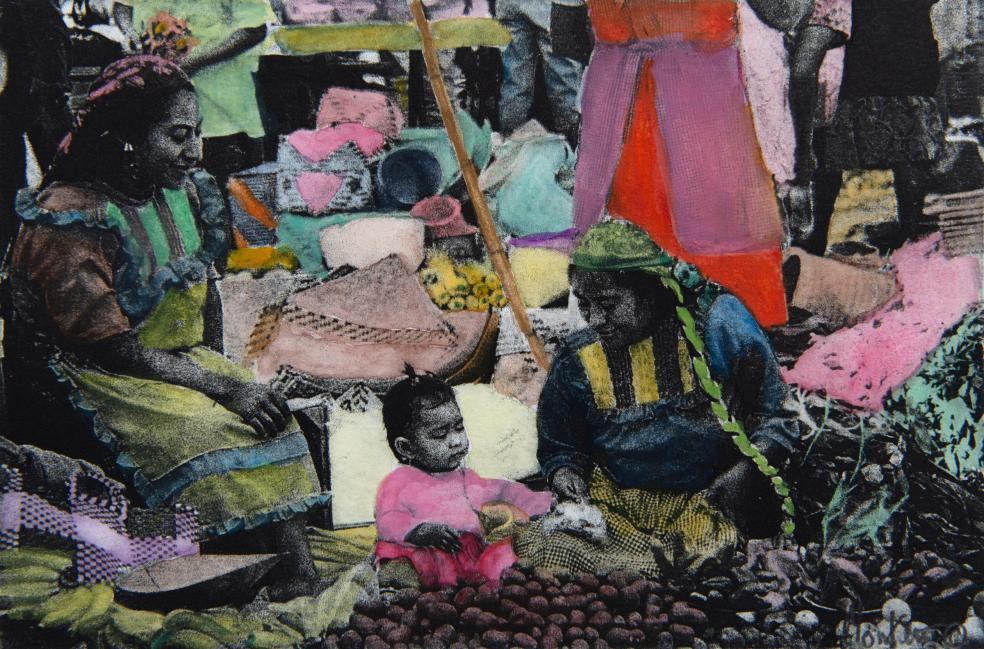
Bebe Rosa, 2025, Etching and watercolor, 6 x 8.75 inches

Hemingway’s Studio Finca Vigia, 2025, Etching and watercolor, 6.825 x 9.825 inches
